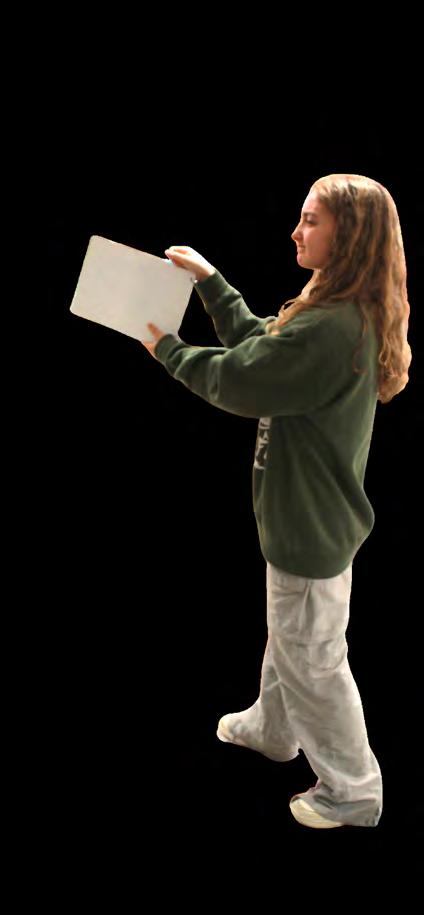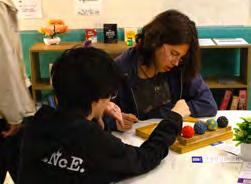
Wellness center aims to support students’ mental health

6 Does AI have a place in the classroom?

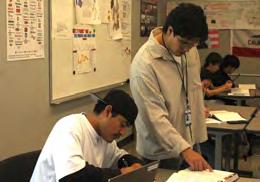

7 Bilingual paraeducator lends helping hand to ELD community 12
Taylor Swift is not your English teacher

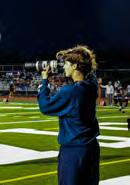







6 Does AI have a place in the classroom?



7 Bilingual paraeducator lends helping hand to ELD community 12
Taylor Swift is not your English teacher






hhsepitaph.com
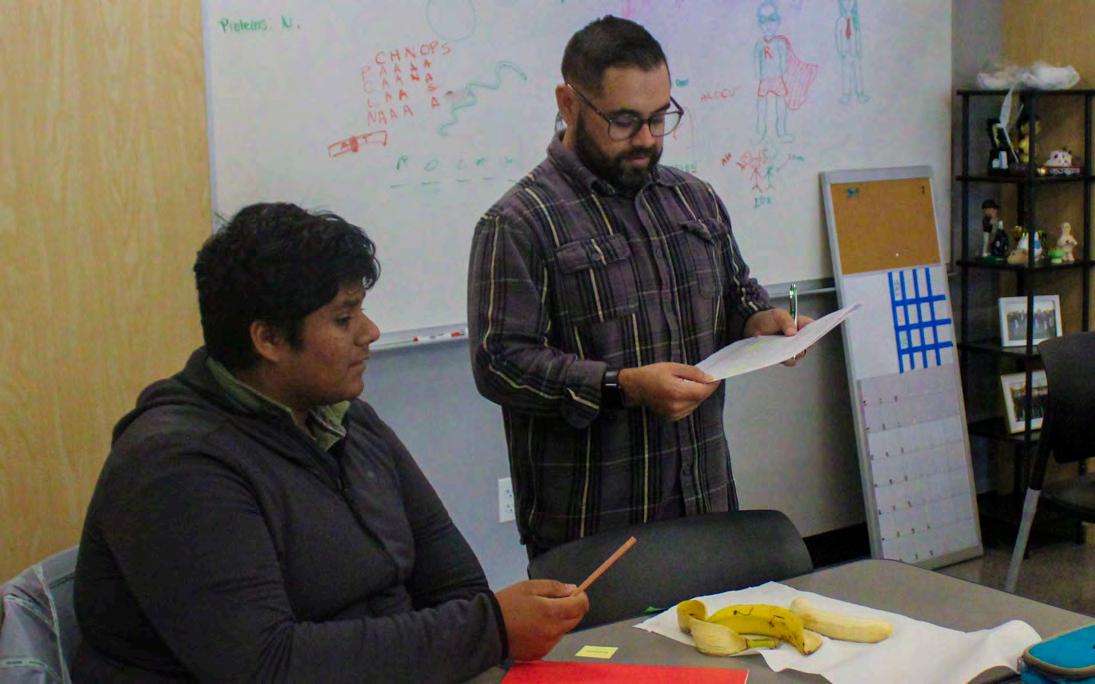

kinesiology
Annika Abraham, Emma Chang, Danielle Feldsher and Saachi Nangare
As a dual-enrollment course through Foothill College, the kinesiology class follows a college curriculum and teaches essential skills in rehabilitation, injury prevention and treatment of different injuries, kinesiology teacher and athletic trainer Dan Yusim said.
Yusim’s success as an athletic trainer and sports medicine program manager helped foster strong student interest in kinesiology, assistant principal Terri Hannigan said. The class was even limited to only juniors and seniors due to high enrollment, Hannigan added.
“We had students in the past travel to FHS to take kinesiology,” Hannigan said. “With our robust sports medicine program, we thought it would be of high interest.”
Implementing the course took a little over a year, and during that time, administrators met with guidance counselors and assistant superintendent Trudy Gross to discuss interest, Yusim said. At last year’s course selection fair, over 100 students attended the kinesiology presentation, Yusim said.
“I’ve had many years of experience of working here, but this is my first year in the
classroom,” Yusim said. “The students have been great so far, being flexible with my teaching style, but I’ve done a wonderful collaboration at FHS to develop the curriculum.”
Thus far, students have had the opportunity to get CPR certification, and they are currently training with medical equipment like AEDs, senior Julia Boroun said. The class prepares athletes for many emergency circumstances, and Boroun said as a cross country runner, she feels learning skills for athletic health is critical.
“A lot of my team is in Yusim’s room a lot because we get injured really easily. I spend a lot of time in the training room, for myself or a teammate, and I was interested in pursuing that,” Boroun said.
The hands-on approach of the class is refreshing, as it encourages students to bond while learning, Boroun said.
“It feels like we’re all very comfortable with each other,” Boroun said. “It’s a really nice environment.”
Yusim said his own interest in sports medicine was sparked in his high school years, so he is excited to help students expand that same passion.
“Adding this class is a huge opportunity for not only the interns in the sports medicine program, but for any students that are interested in the field of kinesiology,” Yusim said. “We thought this class would give them a good opportunity to have the lecture component involved and the education to support them.”
Valdivia, Biddle discuss transition into roles
Sachin Chandran, Julia Song and Selina Wang
As the 2025-26 school year commences, assistant principal Mayra Valdivia and dean Melanie Biddle have joined the administrative team this year, principal Denae Nurnberg said. The decision came
as their predecessors, Paula Mockler and Maria Trejo, relocated to new administrative roles at the district office and at McKinley Elementary School, Nurnberg added.
“Valdivia and Biddle stood out amongst the rest of the candidates,” Nurnberg said. “It was nice having two FUHSD staff take on these roles. We really were happy about that.”
See New Admin, page 3
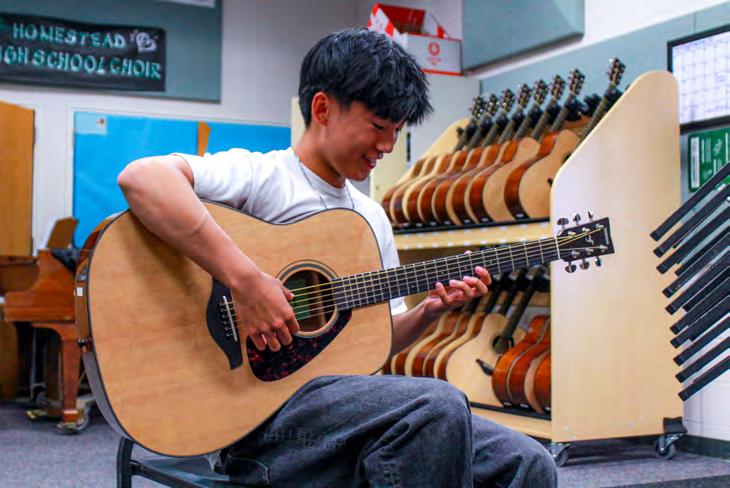

A new guitar class was introduced this school year, allowing students to gain a skill they can showcase outside of an academic setting regardless of prior skill level, principal Denae Nurnberg said.
The change comes as a result of Prop 28, a bill allowing FUHSD to offer more art and music programs, music department lead Jeff Morton said. After multiple student surveys, administrators and teachers collaborated with MVHS in proposing the addition of guitar classes to the district board, Morton said.
The curriculum focuses on teaching students the basics of guitar, rather than mastery, Morton said. Morton said he hopes that by learning the basics, students can grow a lifelong interest in music.
“The intent is [to] take somebody who’s never played an instrument before and build them up to where they can play a bunch of songs, [whether] at a singalong during the holiday season or just pop songs that they can play while people sing,” Morton said.
Since the class is open to students of all experience levels, gaps in skill between players can make it challenging to create
a curriculum that engages everyone, music director of band and orchestra Ben Scharf said.
“In those moments, we like to have more experienced players grouped with newer players so that they can model and help the younger players,” Scharf said. “Being around someone who really has a solid understanding of the guitar does so much to help inform new or less experienced players.”
Senior Ojas Khandelwal said the new curriculum and class structure allow for self-guided learning. Each period begins with review, before students have to practice on their own, Khandelwal said.
“Guitar, like any other music class, is about practice,” Khandelwal said. “I was surprised to see how fast-paced the class was in terms of learning certain chords, but we do spend two block periods and a Monday every week to be successful.”
The guitar class is unique in that it fulfills a niche that had not been addressed by prior music courses like band and orchestra, Scharf said. Additionally, the class will allow students to explore a diverse range of musical skills, including those beyond Eurocentric genres, Scharf added.
“It was super important to make sure that no matter what style of music you were interested in, there was a place where you could learn about it more,” Scharf said. “We’re still far from realizing that goal, but we think offering the guitar class is a pretty strong step forward.”
Ethan Xue and Alan Zhang
Leadership implements new structure point system and having two presidents, ASB can develop better class culture and community support, Heller added. ASB is replacing the supplemental hours system with the Mustang Matters participation grading system, ASB adviser Hector Almendarez said. The original policy tracked attendance per hour spent, and the new system will incorporate an event-based format, Almendarez added.
Through organizational changes and participation requirements, ASB aims to improve officer engagement and performance this year, IDC commissioner, junior Kat Heller said.
By instituting a new participation
See ASB changes, page 2
Community members discuss new student support center’s purpose, impact
The Meadow, the new wellness center in L108, was softlaunched over the week of Sept. 22, following suit with other FUHSD schools that have opened wellness centers to offer accessible mental health resources, HHS wellness support specialist Julio Llerenas said. With the soft launch serving as time for classrooms and clubs to tour and learn about the wellness center, the grand opening on Oct. 6 made it available to all students from 8 a.m. to 4 p.m. every school day, Llerenas said.
Rather than acting as a recreational area, the wellness center will serve as a space for students to find mental health assistance and retreat from academic
stress, school therapist Sarah Loyd said.
“The whole point of the mental wellness center is to go there, ground yourself, regulate yourself and then return to class,” Loyd said. “It’s all about going there and doing what you need for you to get on with your day.”
To effectively support students, the wellness center will offer diverse mental health resources, like sensory stress relievers and group workshops, to create a relaxing setting, Llerenas said.
“When they’re in there, it’s a very quiet place,” Llerenas said. “We want to make sure students [can] get away from all the stress, noise and whatever is affecting them, so they have a space that’s really calm.”
In addition to offering a quiet relaxation space, the wellness center may connect with community organizations to provide additional catered resources like animal therapy, athlete support and food sourcing, Llerenas said. The space is also planning to col-
laborate with school clubs for events and workshops, Llerenas added.
“A stigma people see [in] a wellness center is that it’s for somebody that has a mental illness. [However], the wellness center is for anybody that just needs a space to relax, de-stress or do some self-care activities,” Llerenas said. “Joining with different clubs can help to reduce that stigma as well as learn some other ways to do wellness through their clubs and promote it throughout the campus.”
To further promote the wellness center and include student management, Lloyd formed the Student Wellness Advisory Group last year, SWAG member, senior Shaurya Prayag said. Since its formation, SWAG has conducted school-wide marketing campaigns and helped develop the center’s physical environment by purchasing furniture, Prayag added.
Based on her experiences, Prayag said she hopes the wellness center will alleviate student
dling procedures that go into the science department that she was well versed in.”
Allyene-Levy said they were close friends and would bond over their daughters.
stress from the competitive high school ecosystem.
“I think high school should be a place for people to feel safe and welcomed,” Prayag said. “When people come here, they’re really stressed out, which doesn’t contribute to a good environment. The [wellness] space will hopefully lessen the stress here.”
As a more flexible resource than therapy, the center will
help students on their emotional journeys beyond high school, Llerenas said.
“Not a lot of places go this route, so to have this school district be really involved in student mental health is important,” Llerenas said. “It is an honor to be part of that process because we want to see all students succeed not just in school, but later in life.”
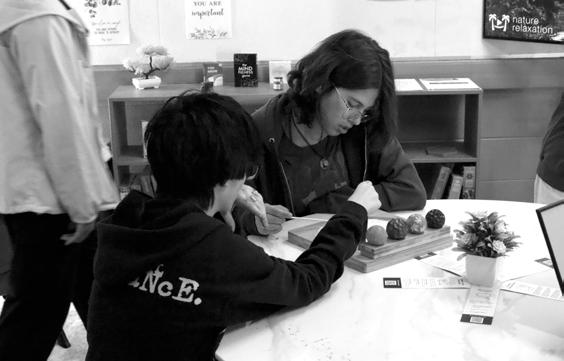
Continued from page 1
While leadership students work diligently to organize events, Almendarez said it is also important for the student body to notice their active involvement.
Lab technician and paraeducator Maria Manrique passed away in June. Manrique was loved by family, friends, students and coworkers, and she was a valued member of the science department. She will be sincerely missed by the community.
Manrique managed the labs at HHS and LHS, arranging supplies and ensuring they were up to safety and cleanliness standards. During the seven years she worked at HHS, Manrique worked closely with TAs and science teachers, principal Denae Nurnberg said.
“[Manrique] would set up the lab equipment and support the science teachers, making sure we had all of the supplies ordered and organized,” Nurnberg said. “There are a lot of safe han-
Nurnberg said she will miss Manrique’s smile and the way she sparked happiness in others.
“[Manrique] had the most beautiful spirit about her, just so much joy and warmth,” Nurnberg said. “Every person she talked to she made feel so important, valued and cared for.”
Science teacher Samuel Fung said he admired Manrique’s care and dedication to performing well in her job. If he ran out of a chemical, Manrique would offer to get it from the storeroom at LHS or buy it from a store, Fung said.
Similarly, science department lead Dara Alleyne-Levy said Manrique did a lot in addition to her regular job, often going the extra mile to support her colleagues.
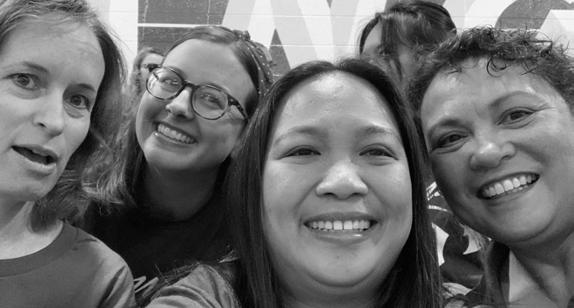
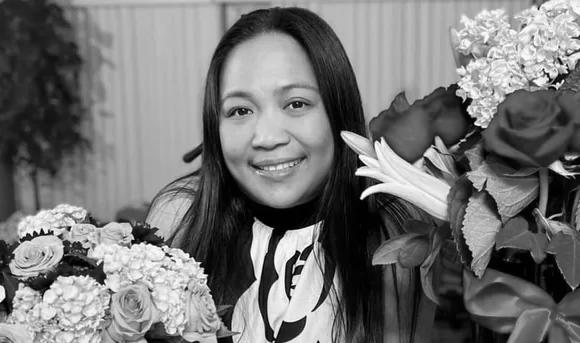
“Her daughters are older than my daughter, and she would bring things they outgrew and give them to my daughter,” Alleyne-Levy said. “It was the same thing with so many other members of the department. If anybody had to bring their kids to school because the kid was sick or needed to come home, we felt okay leaving them in the back because she hung out and colored with them.”
Manrique made everyone feel more joyful about coming to work, Alleyne-Levy said. When the science department hosted a joint sushi Halloween costume one year, Manrique went out of her way to make ginger and wasabi headbands for her fellow staff, Alleyne-Levy said.
“The headbands she made were just something that [made me think], ‘Wow, this is not part of your job description,’ and yet, she put so much care into doing something for all of us, and that says a lot about who she was as a person,” Alleyne-Levy said.
Additionally, Manrique encouraged TAs to help out in the science department, Manrique’s TA, senior Sarina Chen said. Chen added that Manrique was generous and patient about answering her questions.
“She was always very empathetic toward my issues,” Chen said. “I’d complain about how stressful my day was and she’d be so understanding.”
Manrique’s warm personality lifted the spirits of those around her and left a mark on those who knew her. She will forever be remembered as not only a fellow staff member and colleague, but also as a close friend, Alleyne-Levy said.
“That absence does leave a hole in the science department,” Alleyne-Levy said. “Although we can have a new lab tech, we can’t have a new Ms. Manrique.”
Under the Mustang Matters system, ASB officers earn points weighted on how uncommon or difficult it is to go to various school activities, which encourages attendance for undersupported organizations and events, Almendarez said.
“For a football varsity home game, a lot of people go to that anyways,” Almendarez said, “but not a lot of people see JV, [so] if you go support the junior varsity team when they play at some other school, that’s a lot more effort, so the points reflect that.”
By boosting leadership engagement, ASB can manage and promote community events more efficiently, Heller said.
“In the leadership class, we talk a lot about feedback: ‘How did this go? Can we do better next time?’” Heller said. “If people aren’t coming to the events, they can’t really give that feedback.”
This year, ASB is also implementing organizational changes, such as a two-president structure that promotes more balanced and effective decision making,
ASB co-president, senior Vincent Wang said.
“[Evangeline and I] complement each other really well in having someone else you can refer to to ask their opinion or get feedback on something,” Wang said. “That way, you get multiple perspectives on a decision, and you can better represent the student body in terms of voting.”
Furthermore, ASB has created more positions to expand its capabilities and community impact, Heller said. For instance, the new photographer will establish a more professional and engaging social media presence, Heller added.
While these changes primarily aim to influence internal class culture, they will ultimately benefit and set a positive example for the rest of the community, Wang said.
“With the way we’re structuring things, we’re trying to build a lasting culture within ASB that can sustain beyond our years and after we graduate, and that is making sure people in ASB feel welcome, like they belong here,” Wang said. “That goes a long way to [improving] our ability to foster those same feelings and culture for the student body.”
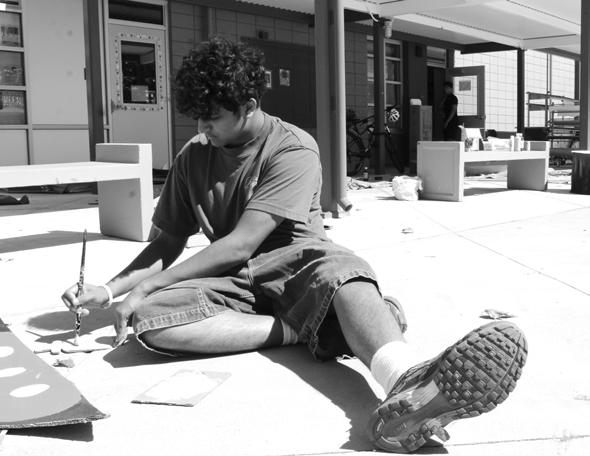
Alicia Liste and Parth Dhaulakhandi
Former FUHSD board of trustees member Hung Wei passed away in August. Wei’s contributions to the district and her impactful character will be cherished by those who knew her and worked with her, as well as the larger FUHSD community.

In Wei’s tenure as a board member from 2007 to 2018, she served as a community-minded presence, eager to incorporate student ideas into decision making, former superintendent Polly Bove said.
“For [Wei], it wasn’t about coming on the board with a plan to get a certain thing done. It was to come on the board and be sure that the student voice was part of her work,” Bove said. “If there were students there to speak, she would ask the students’ voices be heard. She wanted as much of an understanding about what students cared about as anybody I’ve ever seen on the board care about it.”
Within her professional career, former board member Jeff Moe said Wei was a dedicated, passionate board member who always looked for opportunities to improve student health and wellbeing.
“She would always be positive and think on the bright side. [Wei’s] quirk was her smile. I don’t
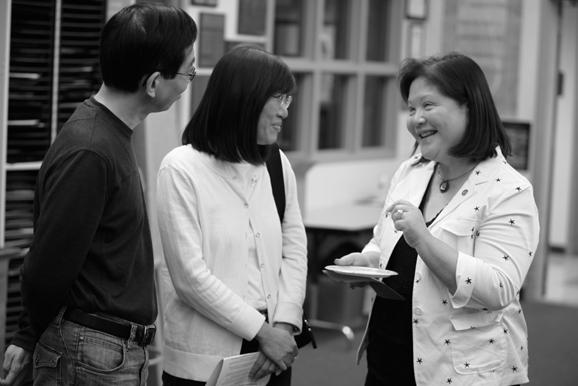
Continued from page 1
Mayra Valdivia
As the previous dean of students at FHS, Valdivia will use her experience to focus on overseeing student assistance programs, like the new wellness center and the student assistance team, Nurnberg said.
In addition to assuming AP testing responsibilities, Valdivia said her role on the student assistance team allows her to collaborate with coworkers to support students.
“There are already some systems in place to make sure that we are communicating with the appropriate team members for each student,” Valdivia said. “For example, we will collaborate with the school counselors, and we’ll meet regularly to talk about students and be a safety net for the kids.”
While Valdivia settles into her new position, she said fellow staff and students have provided a friendly environment for her to thrive.
“The most rewarding part is just being welcomed by the team, from the principal to the staff to the custodians to the secretaries,” Valdivia said. “That kind of welcoming has really made me feel at home and [like] I’m going to be okay.”
As the year progresses, Valdivia said she is looking forward to getting accustomed to the culture and optimistic atmosphere of HHS. She also hopes to build pos-
ever remember her frowning. I don’t ever remember her with an angry face,” Moe said. “When you work with someone who is very positive, it just makes the team effort that much more enjoyable and productive, too. I don’t know anyone who had more friends or more connections than her, just because everyone liked to be around her.”
One of Wei’s focuses in her role was protecting and improving the emotional wellness of students, former board member Bill Wilson said.
“She cared a lot about students’ mental health,” Wilson said. “[She understood] that it was important for us to do things to alleviate the pressure on students or at least give them positive ways of dealing with the pressure and stress that come from being a teenager in the Silicon Valley.”
As a member of the FUHS Foundation board, whose funds support FUHSD high schools, Wei was dedicated to growing the Foundation’s endowment. Using her persuasive personality, she aimed to benefit student learning, Bove said.
“Heaven help you if you go to an event where she’s raising money. I dare you to walk out of the room without giving money. It just was impossible,” Bove said. “It wasn’t because she was pushing or threatening. She was just so enthusiastic, she could convince anyone that this cause that she believed in down to her toes, was worth giving to.”
Beyond her direct contributions to FUHSD, Wei served as an influential figure in the local Asian American community. Wei ensured families of all backgrounds felt empowered and recognized by the board, Willson said.
“[Wei] was great at helping Asian families feel like they had a voice and could tell us things and let us know what was worrying them,” Wilson said. “She was marvelous at doing that, and I always felt like every time she helped us do that we learned more about how to serve the kids better. I am eternally grateful for that belief on her part that [Asian families] needed to speak up and we would welcome what they had to say.”
Wei also displayed her thoughtfulness on a memorable district trip to Taiwan, sponsored by the Taiwanese government, to learn more about teaching Mandarin as a second language in the district, Bove said.
“One night at the night market [in Taiwan], she found a little Buddha for me. If you hit it, it would always stay standing. She said to me, ‘You need this on your desk, because if things knock you down, you’ve got to bounce right back up,’” Bove said. “When I have to take a tough trip, like for a funeral, I put that Buddha in my suitcase because it reminds me of the kind of resilience that she had and the kind of support that she gave and understood was necessary.”
Bove said Wei’s ability to remain open-minded and connect with her constituents was valued by those she met.
“I have never in my life known someone with such passion, enthusiasm and positivity about doing the best every day of her life for the role she had chosen,” Bove said. “She cared so much about being committed to students. It was inspirational, and it wasn’t just inspirational to me or to the board. If you look hard, she was inspirational to the community at large.”
Ethan Xue
Local: Cupertino Whole Foods reopens
Following months of closure due to a vermin infestation, the Whole Foods Market in Cupertino reopened Sept. 29, according to NBC.
The Santa Clara County Department of Environmental Health conducted multiple inspections, from late March to early April, and found rodent droppings throughout the store, closing it until the infestation was removed, according to Mercury News.
In early September, inspectors found no remaining evidence of health hazards and authorized the store for reopening, according to Mercury News.
While the store will still face routine inspections, Whole Foods Market is now officially open to the public, offering a cleaner, revamped shopping experience, according to CBS.
State: Newsom signs AI safety law
Governor Gavin Newsom signed senate bill SB53, the Transparency in Frontier Artificial Intelligence Act, on Sept. 29, serving as a landmark law for AI safety, according to NBC. The bill requires major AI companies to publicly disclose their safety policies and related criminal incidents, establishing more thorough regulation on the growing industry and setting an example for other states, according to NBC.
SB53 counters loose federal measures on AI by enforcing transparency requirements for most global AI giants like OpenAI, Meta and Anthropic, whose systems possess computational power exceeding a set numerical threshold, according to Politico.
itive relationships with support staff, paraeducators and teachers, Valdivia added.
“I’m looking forward to working with the wellness space and seeing what that does for students here,” Valdivia said. “[I hope] to support them, not just with mental health, but supporting the whole student, and I’m excited to get to know the student population here.”
Melanie Biddle
Stepping into her new role, Biddle said her background as an ACT teacher translates well to acting as a dean because behavioral management is a big part of her new job.
“[My role] is different from anything I’ve done before,” Biddle said. “I am excited to learn new things and grow as a person, administrator and educator. I’ve been teaching for a couple of years, and I have gotten good and enjoyed it, but it’s nice to try new things.”
However, these new responsibilities come with their own set of obstacles, as Biddle said she anticipates having to frequently adapt to and overcome difficult circumstances with the help of fellow administrators.
“I’ll definitely have a good team and a good partner to work with,” Biddle said. “Dean Sharma and I are going to be working closely together, so if we roll out new things, it will be something that
we’ve talked about and decided as a team.”
Looking ahead, Biddle said she hopes to support students and address their concerns in order to maintain a safe environment for everyone. Additionally, Biddle said she strives to form close
bonds with students and teachers.
“My hope is to meet students and build good relationships with them,” Biddle said. “I am a friendly person, and I hope students see that and feel comfortable coming to me if they have questions or concerns.”
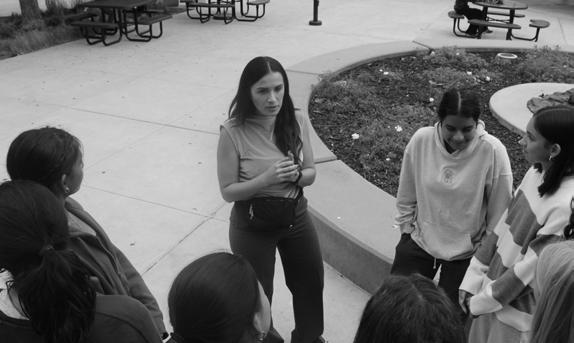
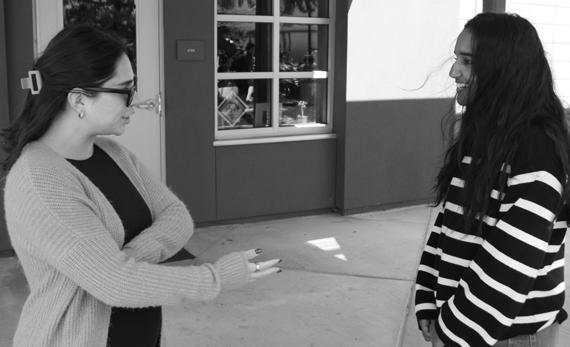
Since most of these companies are based in California, the law will create global repercussions for AI safety, setting a precedent for legal responsibility in the rapidly expanding AI industry, according to AP News.
National: Possible government shutdown
Much of the federal government was shut down starting Oct. 1 after Congress failed to reach a funding agreement, according to NPR.
Under the Antideficiency Act, many nonessential government agencies have been forced to temporarily cease operations and suspend worker wages until both parties compromise and pass funding legislation to resume financial support, according to CBS.
With Democrats pushing for health care extensions and both parties showing little sign of compromise, it is unclear how long the shutdown will last, according to AP News.

Volume 63 · Issue 1 · October 9, 2025
Editors-in-Chief
Parth Dhaulakhandi
Alicia Liste
Web Editor-in-Chief
Amanda Boles
Print Managing Editor Maya Dutt
News Editors
Danielle Feldsher
Ethan Xue
Opinion Editors
Sachin Chandran
Adam Orrin
Lifestyles Editors
Annika Abraham
Aviv Matas
Alan Zhang
Arts & Culture Editors
Jason Lai
Malar Raguraman
Sports Editors
Olivia Levesque Ouellette
Selina Wang
Copy Editors
Ethan Xue
Alan Zhang
Photo-Illustration Editor
Isabela Guilardi
Design Editors Maya Dutt
Aviv Matas
Multimedia Editors
Isabela Guilardi
Aashka Nagarkar
Social Media Editor Elena Shim
Reporters
Natasha Bandil
Alexander Cao
Emma Chang
Krist Ferreria
Ivy Guo
Henry Hu
Sanjeet Jayaseelan
James Jiang
Elina Li
Saachi Nangare
Luna Pitl
Kanmani Raguraman
Advay Ranade
Julia Song
Ethan Tan
Chloe Wang
Catherine Yang
Yichen Yao Kaylin Yi
Adviser
Natalie Owsley
Mission Statement
The Epitaph is a non-profit publication at Homestead High School, 21370 Homestead Rd., Cupertino, CA 95014.
The Epitaph is a designated forum for student expression and not subject to prior review, in accordance to Education Code 48907. The staff is comprised of HHS Journalism students. Views expressed do not necessarily represent views of the school, its staff or the district. Editorials are opinions of the editorial board.
The Epitaph welcomes letters to the editor but reserves the right to edit submissions. Letters should be limited to 300 words. Include contact information. Unsigned letters cannot be published, but names will be withheld upon request. Send via homestead.epitaph@gmail.com, or drop letters in the newsroom or the office mailbox.
If The Epitaph has made an error, please send corrections to homestead.epitaph@gmail.com. The corrections will be published in the corrections box for the next issue.
To reach the Epitaph in C102, call (408) 522-2572.
Advertising
One email and you can reach over 2,400 students, teachers, administrators and community members from Northern Sunnyvale to Southern Los Altos. If your target market is between ages 14 to 18, contact The Epitaph at epitaph.ads@gmail.com, and we can make it happen.
Thank You to Our Donors & Supporters
FUHS Foundation
Homestead PTSA

In the past month, the college and career center has focused its presentations on college application deadlines, recommendation letter protocols and information on different college options. However, alternative post-high school options like trade school, the military and joining the workforce have not received the same coverage, if any.
Despite what the name implies, the college and career center’s resources are ineffective in equally supporting students with aspirations outside of the college pathway. The center needs to change the ways it helps all students, such as through greater promotion of its resources and spreading awareness of the help the department offers.
Currently, the only school-based resources provided to students with non-collegiate aspirations are delivered upon request from the student, college and career center adviser Shay Bellamy said. If students come to her with questions about trade school, Bellamy said she provides them with information regarding the different options available and career fairs they can attend to learn more.
While this allows for more individualized aid, students are resultantly unaware of opportunities or procedures due to a lack of publicly known materials. In fact, 80.6% of students reported not knowing most of the career-related resources provided by the college and career center, according to an Epitaph survey of 206 students.
Publicly-known resources are necessary for students to independently access guidance, as students who feel uncomfortable talking to staff may be deterred from seeking necessary aid.
Unfortunately, on the most public resource, the school website, digital resources on non-college post-high school options from the center are limited to two tabs compared to the six tabs that provide college-related information.
In addition to this imbalance, this college and career center page is obsolete, with 24 of the 28 links on the “additional

post-high school options tab” and three out of four links on the “jobs” tab being inaccessible or broken, as of Oct. 1.
Without extensive advertising of the resources provided on the website, their offerings will remain unknown to a ma jority of students, thus providing no sig nificant value to the student body.
In addition to a dysfunctional web site, 67.9% of students feel like they are not receiving enough support finding ca reer-related resources, according to the same Epitaph survey.
The college and career center needs to revamp its section of the website by add ing links to current internship opportu nities and job listings, and maintain ing the functionality of these links through frequent updates.
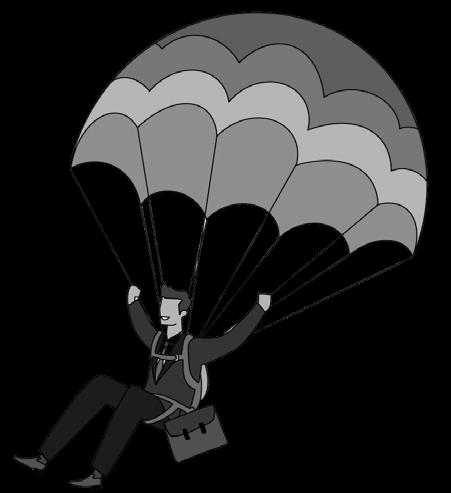
Furthermore, the website should be updated so its section dedicated to alternative post-high school options has information about local resources, such as job fairs, trade programs and career-readiness opportunities, instead of only providing this information via Schoology posts or individual recommendations.
For students to have the materials they need to be successful, the center should also provide workshops that discuss resumes, interview preparation and cover letters. The addition of these supplemen tal resources better prepares students to gain experiences that support their goals.
Similarly, the center’s resources must be actively promoted through emails to the whole school and with flyers post ed around campus to raise awareness about the types of support provided. Other wise, students are left un aware of the resources avail able to them.
The school should also allot more time to resourc es about trade school options during their mandatory coun selor visits and school-wide presentations. This addition would allow students to re
help outside of school. Ideally, the center should create an entirely new presentation specifically about alternative post high-school options, providing students with resources for these pathways. Currently, career-focused materials are not emphasized in guidance presentations, and the addition of this information could bridge this gap. By making amends, the college and career center can ensure all students are supported by the resources they provide, no matter the path they follow after high

Government blames transgender people for gun violence
Henry Hu
The mentality on Capitol Hill has changed. Instead of “Guns don’t kill people. People kill people,” there’s a new mantra: “Guns don’t kill people. Transgender people with guns kill people.”
In the face of these distractions, we need to start tackling gun violence at its root instead of spreading baseless hate toward minorities.
After Robin Westman attacked the Annunciation Catholic School, mourning turned into hate after Westman was revealed to be a transgender female. Government figures, like secretary of homeland security Kristi Noem, blamed Westman’s gender identity as the cause for the shooting, according to the New York Times.
The Annunciation shooting reveals the new scapegoat for gun violence. Opponents of gun control now blame gender identity as the root cause of gun violence,
distracting America from the real causes, rampant gun proliferation and mental health issues.
Creating scapegoats is nothing new in the gun control debate. For years, the gun lobby has blamed everything from video games to immigrants as the cause for mass shootings, according to the Center for American Progress.
By creating pointless debates on nonsensical causes of gun violence, gun rights activists successfully distract people from discussing actual reforms to gun control.
The scapegoating has grown to the point where the Department of Justice now looks to ban transgender Americans from owning guns, according to CNN.
Amid this incessant blame game, Americans must continue pushing for common-sense gun control. It’s time we stop engaging in these ridiculous debates and instead push against the real cause of gun violence: the ease at which people can get guns in the United States.
Beyond just protecting the gun industry, some right-wing extremists find a second incentive in fueling the culture war against the
LGBTQ+ community in America.
Since 2023, after Audrey Hale killed six people at The Covenant School in Nashville, government figures on the far-right like Laura Loomer have begun painting all transgender people as psychotic criminals threatening the nation, according to NBC News.
They ignore the statistics, which show 98% of mass shooters are cisgender men, with most mass shooters having experienced abuse, mental illness or neglect, according to The Violence Project. Instead, transphobes baselessly claim transgender ideology as the sole cause of mass casualty incidents across America.
To combat these accusations and maintain safety, we must continue
to support and fund organizations like the Sandy Hook Promise in their efforts to promote gun control, while cutting donations and funding for groups like the National Rifle Association, who continue to push their agenda for a more gun-filled America.
We cannot let hateful figures scapegoat others, by intertwining their agenda with tragedy to justify their hate. America must unite for common-sense gun control and transgender rights.

Epstein files reveal cracks in Trump´s promise to public
From the infamous Watergate scandal to the Epstein files, lack of government transparency has been an issue throughout the his-
Trump has made government transparency one of his largest campaign promises, promising Americans that he would release the John F. Kennedy and Martin Luther King, Jr. files to the public, according to the White House website.
He also promised to release all information related to sex offender Jeffrey Epstein once elected into office, a promise he is actively ignoring.

It is completely wrong for the government to back out of its promise to the public by refusing to be transparent with the citizens they are supposed to represent. Both Senate and House of Representative Republicans must listen to their constituents and vote for the release of the files.
Specifically, Trump needs to be the one listening to the public. Yet, he has gone as far as threatening primary Republican congressmen for signing the petition to release the files, according to AP News.
If he has nothing to hide, he should not be so desperate to have an early recess to prevent the vote to release the Epstein files to the public.
This makes it clear, Trump refuses to recognize his government's moral duty to release the files and to bring closure to victims who have suffered through years of government apathy.
In a July 2025 poll, 65% of American adults, out of 1,777 respondents, disapproved of Trump’s handling of the investigation into the Epstein files, according to YouGov.
This number is staggering, as it shows that a large majority of Americans want the government to release the files, indicating bipartisan support.
If Trump continues to refuse to release the files despite bipartisan pressure, he is risking his party’s chances of winning the midterms and White House in 2026 and 2028, respectively, by alienating the public.
Now, it is up to the American public to keep the pressure building on Trump.
They must contact the Republican senators, representatives and governors who are refusing to be transparent and attend their city’s town halls.
In doing so, American citizens can demonstrate that America will not stand for the Trump administration's shady behavior and empty promises.
Controversial decision allows for racial profiling, injustice
Over the course of the Trump administration, many anti-illegal immigration measures have been passed. One of the most egregious was put into effect on Sept. 8, with the Supreme Court legalizing racial profiling, according to the American Immigration Council.
To fulfill their duty, the Supreme Court must uphold the Constitution instead of bending to the will of a president. One way we can ensure this is by supporting organizations that challenge presidential overreach in court.
At a time when the fundamental rights of minority groups are under pressure, the court’s duty is not to serve as a shield for those in power, but to act as an independent ruler of law and order.
Going forward, ICE officers in Los Angeles have been given the power to stop people for simply speaking Spanish or appearing
Latino, according to The Guardian. This is a violation of people’s basic rights under the Fourth and 14th amendments, which protects people from unreasonable searches and ensues equal treatment regardless of one’s ap pearance.
Beyond a purely legal lens, decisions like these can also cause adverse mental effects. Con sequences like racial trauma, stress, anx iety, depression and PTSD are common amongst people who have been ra cially profiled, ac cording to VA Gov. Similarly, it can create mis trust between the police and the community, harm ing the effectiveness of law enforcement.

When police target certain groups and rely on suspicion instead of evidence, it creates a perception that law enforcement is not fair to marginalized peoples. This damages the police’s ability to function effectively within marginalized communi-
To mitigate further damage to the Hispanic community, the American people must try to prevent this ruling from appearing anywhere else. If a decision like clearing ICE agents to freely racially profile was used to uphold new laws in the Bay Area, students, staff and parents would be at risk of being detained because of their appearance or language.
One way for Americans to help
It’s time to give detention a referral
Adam Orrin
The school bell rings for school to start, and people rush to their classes. Yet, some students have already been there for an hour. Why? Morning detention.
The school year has started, and with it, detention has, too. Despite its cemented place in the high school canon, detention fails to achieve anything outside of wasting people's time.
Detentions can be given for various reasons, often due to absences from tutorial or if a student receives four tardies. This results in a one-hour detention and then a 30-minute detention for each tardy after the fourth, according to the HHS website.
Currently, students show up for detention check-in and then do schoolwork until detention time is over. This current system not only lacks structure for students but is also devoid of any reflection or meaningful support.
Little research has been done to support the effectiveness of detentions, and the studies that have been done find they are ineffective, according to the University of Nebraska-Lincoln.
While students should be doing classwork during this time, there is little to no enforcement of this policy, so they end up drifting off task.
To foster a detention environment that promotes growth, students should be provided with direct support to enhance productivity during detention. Tutors who do not have enough
stop legalized racial profiling is by coming together to protest and rally. Peaceful protests bring attention to discrimination of targeted groups, showing that people are united.
Openly stating our beliefs will pressure lawmakers, city officials and the justice system to reform these policies.
Furthermore, the Supreme Court must choose the Constitution over the president. If the justices allow political pressure or presidential preference to shape their decisions, it risks eroding the foundation of our democracy,
Environmental lobbyists lack proper prioritization
Sachin Chandran
COLUMN—California is the richest state in the country, with the highest GDP of any state, according to the California government. With booming tech industries and limitless opportunities for entrepreneurship, you would think its residents live in financial prosperity.
Sadly, the state suffers from a homelessness crisis, which has been worsened by environmental lobbyist groups who push to preserve outdated legislation.
For California to start reform, environmentalist organizations
must realize the advantages affordable housing presents, so they stop using laws from decades ago to justify blocking relevant solutions.
This is essential, as nearly 200,000 people in the state can not afford to find a home due to the scarcity of affordable housing, according to the Public Policy Institute of California.
The scarcity that plagues California has been exacerbated by unnecessary environmental zoning laws like the California Environmental Quality Act, dating back to 1970. These measures have stayed in place due to pressure from environmentalist organizations, according to Politico.
Thankfully, our state government is taking a stand against this
legislation. This summer, governor Gavin Newsom signed a measure that makes government housing development unaffected by archaic laws like the California Environmental Quality Act, according to the NYT.
Additionally, affordable housing provides a large economic boost by giving disadvantaged people the necessary support structure and stability to join the workforce, leading to job growth and increased economic output, according to Habitat For Humanity.
Instead of working to stop development, environmentalist groups must turn their attention toward more pressing issues that do harm to the environment, like the havoc that the fossil fuel industry brings. By doing so, they
periods in their schedule but still want to academically support students can tutor people in detention so they do not get left behind.
Currently, the detention system has simply given up on helping students. Rather than offering to help them with whatever circumstances led them to their detention, they are simply hit with a blanket punishment that does nothing to create behavioral change.
To help students with reflection and eventual behavioral change, rather than giving them detention, they should be given support. Using the new on-campus wellness center, which was designed in part to help with conflict resolution, students can be given an alternative.
Changing the detention system to something more productive won't lessen the punishment or encourage bad behavior. Instead, it will allow students to make meaningful change by helping them fix the root causes that led to their detentions.
If the administration truly wants to fulfill its promise of responding to the academic and personal needs of everyone, then it will help to create a program that fosters progress in place of pointlessness.

Detentions need to refocus and create effective learning tools.
alongside eroding the sanctity of their role.
Students can personally influence this by learning how the Supreme Court works and engaging in peaceful activism.
With ICE being given the all clear to target Hispanic residents, it is more important now than ever for Americans to stand up against this injustice.
It is our and our elected representatives’ duties to clarify that America is not a country where someone can be detained for speaking their language or freely expressing their native culture.
will still have an impact on climate change that does not damage the opportunities and well-being of California’s residents.
Similarly, the state government must do their part in supporting the contruction of affordable housing.
As some of the first hous ing developments during Newsom’s governance, the laws passed this summer are a step in the right di rection. However, they are only the beginning of what is to be a long battle to prevent homelessness.
To continue progress, Californians must
fight against lobbyists to repeal measures from decades ago and take control of housing construction.
Additionally, residents must petition local and state leaders to ensure this legislation is passed. If not, people will continue to unnecessarily suffer on the streets, unable to access the

Aviv Matas
Since OpenAI first released GPT-3.5 to the public, the way students approach school has changed irreversibly. Assignments that once forced us to come up with our own ideas and show a mastery of skills can now be circumvented by typing a well-worded prompt into an artificial intelligence engine such as ChatGPT or Gemini.
To counter this, teachers should employ better methods to prevent and manage AI usage, and HHS should keep AI banned until there are more conclusive results on the benefits and harms AI has on learning.
AI does not provide an authentic academic experience. People who relied on their existing knowledge or a search engine to write an essay had significantly higher activity in parts of their brains dedicated to creativity, brainstorming and memory than people who used AI to aid in their essay writing, according to a study by MIT.
Additionally, individuals within the AI usage group were less likely to remember parts of their essay when asked to rewrite it, according to MIT.
Students who use AI bypass critical thinking skills, leading to them only partially engage with the curriculum. This harms their overall grasp on the material, which is especially concerning since high school is a crucial time for learning.
Skills like writing, brainstorming and critical thinking are very crucial to learn. It is well worth the inconvenience to master these skill now, since places like college and the workforce are unlikely to be as forgiving.
Much of the burden of remedying this growing issue lies within the curriculum. Teachers must design assignments that make it difficult for students to use AI, such as in-class assignments or creative work that requires students to tap into personal experiences rather than falling back onto the aid of chatbots.
Another strategy teachers could utilize is approaching students they suspect of using AI with curiosity and a desire to learn why they felt they needed to use it rather than confronting them accusatorily.
Asking students why they used AI may uncover deeper issues like excessive workload or not understanding a con cept fully.
A teacher can then work through with the student to discourage future AI abuse.
To keep the integ rity of a school envi ronment, HHS must continue to prohibit AI within classrooms un til its effects on learn ing are more heavily researched and it can be implemented re sponsibly.
Catherine Yang
As artificial intelligence advances with tools that can draft essays, do homework and generate ideas, schools must make the critical choice on how it should be used in an educational setting.
To equip students for the real world, schools must allow them to engage with AI directly and familiarize themselves with it. Banning AI will not prevent students from using it. Instead, restrictions motivate secretive usage, increasing the chance of it being abused.

Additionally bans are unwarranted, because schools are the perfect place to use AI as a learning tool. By breaking down concepts, AI can enhance a student's experience by giving clarity on complex subjects.
In the context of my academics, I have found AI to be beneficial. Throughout my junior year, I used it to help me review for tests, as it generates concise study guides of units while also providing specifics for important events.
It also served as a grader, offering feedback on my essays by pointing out areas that I could improve on. I made AI my
LA must prioritize safety, resources before 2028 Olympics
Malar Raguraman
The Supreme Court overturned a restraining order that protected Los Angeles citizens from being profiled by federal agents based on their race, language, job or location on Sept. 8, according to Newsweek.
At the same time, LA is revamping infrastructure to host the 2028 Olympics, according to the San Francisco Chronicle. The globally revered event requires the concentration of thousands of staff, athletes, coaches and referees in one location, making heavy security critical and extending an invitation to the presence of US Immigration and Customs Enforcement officers.
Moving the Olympics to a location where fewer immigrants are at risk is necessary for LA to keep its residents safe.
LA has a 48% Hispanic or Latino population, according to the Los Angeles Almanac. Huge numbers of people must now live in fear of being persecuted and deported by ICE.
Furthermore, events such as the Olympics require that federal agencies working under president Donald Trump maintain control over security, according to the San Francisco Chronicle.
The Trump admin istration could easily multiply the presence of ICE officers in LA in the name of increas ing security. With even more individu als vulnerable due to the recent Supreme Court ruling, immi gration raids in LA would only get worse
and more extreme if there is a reason to send large numbers of government officials to the city.
When ICE is openly arresting individuals and cracking down on the huge immigrant group of LA, it is inconceivable to invite more of the same officers into a city that is already being attacked. LA cannot put its residents at risk for the sake of Olympic athletes.
Moreover, the cost of hosting the Olympics has become increasingly expensive in recent years, according to CNN. Billions of dollars are spent on the event, with very few cities now making actual profits from hosting it, according to CNN.
LA, which was ravaged by wildfires in January of this year, has suffered $250 billion in damages, according to the LA Times. As the city is rebuilding and recovering from a natural disaster, it does not have resources, money or effort to spend on an expensive event like the Olympics.
Additionally, LA is not prepared enough to take on such a huge-scale event with its current urban housing state. It is in a severe housing crisis, being 270,000 units short of the necessary amount, according to The Angeleno Project.
Even current temporary housing programs in LA would be dismantled by the Olympics, as tourists would displace the thousands of individuals living in hotels
and motels funded by the city, according to the LA Times.
Instead of setting aside money for permanent housing for the homeless, LA is misusing its funds by spending them on the Olympics. By hosting the population-dense event, the city will drive out the already minimal opportunities it has provided its homeless population.
Rather than spending billions of dollars to host an international event, LA must spend that money on its own people. Rather than of working to house athletes, LA must work to house its many homeless residents. Rather than providing security for sports games, LA must keep its immigrant community safe.
The city must work with the International Olympic Committee, to move the 2028 Olympics to a different location, where the security of the city’s residents is not put in jeopardy.
The IOC has the power to terminate the Olympics in the face of safety concerns, according to the LA Times. With raids breeding an unstable environment, they must relocate to avoid a waste of resources.
The repercussions for resigning as host of the Olympics are not small. However, the city of LA must recognize that there is less pride in hosting the Olympics than there is in taking care of its people.

study partner, and it refined my understanding.
Since students already use AI outside the classroom, schools must teach them to use it in the classroom. AI literacy is quickly becoming one of the most sought-after skills in the workplace, and employers are paying a premium prices for people who understand AI across a variety of fields, including marketing, healthcare and law, according to CNBC.
Therefore, it is better to equip students with skills now rather than later before this technology inevitably becomes more robust and widespread. By banning AI, schools are actually hindering success for students, and they must stop treating AI as a threat to learning.
Instead, schools need to prepare students to engage with AI responsibly through policies that structure curriculum around it. A policy with clear guidelines requiring students to cite their use of AI tools on assignments would achieve this effectively.
Teachers could design fun assignments that explicitly integrate AI, helping students develop a moral code on how to use it. By embedding AI into school, we can normalize it while ensuring accountability and transparency in its usage.
Just like how calculators are now an integral part of the math classroom when they were once seen as a threat, AI can be a powerful learning tool in the classroom as well. Embracing it in education will be crucial in preparing students for life beyond high school.
Aashka Nagarkar
College students having dedicated housing provided by their colleges is a great idea but not when it kicks innocent families out of their homes.
The Foothill-De Anza Community College District announced in March that it will create new student housing with the ability to house 332 students, according to Cupertino Today. Housing development will be located in McClellan Terrace Apartments, currently home to 94 families, according to The San Jose Spotlight.
While this initiative helps provide housing for students, it will displace too many families in the process. Though they are receiving financial assistance from the college district, the burden of finding a new place to live is an unreasonable ask.
This development has caused a bidding war on rental prop erties for families that cannot afford to pay the high prices necessary to secure housing in the area, according to Cupertino Today.
As a result, families will need to move into completely different neighborhoods, or even different cities. Children who reside in these homes will be even more affected because they will have to switch schools or districts.
Along with the affects on the households, the plan is not even affordable for the students it intends to serve.
Even though Cupertino
has an expensive cost of living, a combined cost of $4790 per month across five residents per unit for student housing is well above market rate, according to Apartments.com.
If the Foothill-De Anza community College District truly wanted to build affordable housing for their students, they would be charging rent prices that total to be lower than the average rent prices in the surrounding residential areas.
This new housing could be in the form of dormitories on campus, where instead of buying and renovating existing housing complexes, the district could have on campus apartments which makes it easier for students to commute. Instead, the district has shown they prioritize making money over the interests of low-income students or people already in these apartments. Ultimately, the Foothill-De Anza community College District's new project is ultimately harmful to both current residents and the students.

Raised in an immigrant household with Spanish as his first language, paraeducator
Daniel Valencia said he puts his bilingualism to use by giving back to the community. Despite being a new staff member, Valencia said he has quickly adjusted by translating for Spanish-speaking ELD students across different classrooms.
“I’m able to speak Spanish, and I want to help the community out,” Valencia said. “I feel like it’s a perfect role for me.”
On the job, Valencia said he moves between classes during periods, assisting students by translating and clarifying directions, as well as keeping them on task. Additionally, for students who need help navigating Schoology, Valencia said he reviews assignments with them and makes sure they stay on top of their work.
One of the challenges ELD students face is the additional effort it takes to understand course material, English teacher Christina Graham said. Immersed in a second language, their brains have more to process than those of native English speakers, Graham said.
“I think the challenge that isn’t unique to this class sheltered literature and writing but is more unique to that population, is that their cognitive load is really high, [so it takes more] effort because their first language is another language,” Graham said. “Anytime I’m speaking English and anytime they’re reading in English, their brain has to go through extra steps to make sure that they’re understanding everything. The class can actually be more exhausting for them, in a way it wouldn’t necessarily be for a native English speaker.”
To help students overcome this language barrier, Valencia said encouraging open commu-
nication between students and teachers is key.
“If there’s no communication, there’s no way of really understanding where you’re coming from,” Valencia said. “Communication also helps with the material that’s being taught. I make sure to set aside extra time dedicated to certain students who need a little bit more help.”
Having another person fluent in Spanish, whom students may feel more comfortable seeking help from, is extremely useful in ensuring students feel empowered, Graham said.
“Having an extra adult that you feel comfortable talking to is also a benefit,” Graham said. “Having somebody that’s also a caring person, that you can ask a question to and that you can get help from, is really beneficial.”
Valencia said, one goal he has for the year is to cultivate a supportive classroom environment where students feel comfortable speaking up for themselves.
“I want them to feel safe and comfortable sharing anything that is bothering them,” Valencia said. “I know that sometimes students are scared to ask for help, and I hope to make them feel comfortable, and make sure that I’m listening to them.”
From a student perspective, English learner, senior Esteban Hurtado, who utilizes Valencia’s aid in his sheltered government and economics class, said Valencia is a helpful and approachable figure who is easy to talk to. Valencia’s work is essential to ensure Spanish-speaking ELD students succeed in their classes, Hurtado said.
Though this is his first year serving as a paraeducator, Valencia said he hopes his contributions help ELD students grow into more confident individuals both inside and outside of the classroom.
“I really want to help the students advance in their personal life and their academic studies, as well,” Valencia said. “I want to see them be successful in any aspect of life, and I hope to contribute to that.”
Club improves results from last year, hoping to attend nationals
Advay Ranade
Hands hovered over buzzers, ready to strike as the proctor began reading question slips at the quiz bowl Sacramento Fall Tournament on Sept. 13. The tournament was a test of general knowledge and teamwork, president, senior Sonali Wake said.
Last year, the club could not qualify for the National Academic Quiz Tournament because they were unprepared for collaborative questions, Wake said. Hoping to revitalize their nine-year streak of qualifying for nationals, the team had hoped to perform well at this year’s Sacramento tournament and advance in the National California Quiz Bowl Alliance circuit, Wake said.
At the tournament, quiz bowl achieved a record of 2-7 and placed seventh of 10 teams, varsity captain, senior Srinish Kollipara said. Despite their losing record, quiz bowl won more games compared to last year, Kollipara said.
“It would have been nice to qualify for nationals, but we won two games, and we lost two games that were pretty close,” Kollipara said. “At
the end of the day, the improvement was meaningful, and over the course of the year, we can get stronger and stronger and hopefully qualify for nationals.”
To prepare for tournaments, members of the varsity team practice one hour every week using online packets, vice president, senior Vivek Athavale said.
Varsity team members practice individually for toss-up questions and work together for collaborative prompts, Athavale said.
“[The] primary resources we use are called Protobowl and QB Reader, which are two tools that read quiz bowl questions from a variety of packets in the past,” Athavale said. “They have specific difficulties and specific categories you can choose to tailor to what you need to improve on.”
Currently, Kollipara said officers are identifying ways to progress further at their next tournament, California Cup #1 on Oct. 3.
“We found out many teammates know the answers before the other team, but they’re unsure or they do not want to risk being incorrect,” Kollipara said. “so I think aggression is something we can improve on.”
In the future, Kollipara said varsity hopes to share their skills with underclassmen competitors.
“It would be good if we could get a streak started again and pass down our knowledge to some of the juniors, sophomores and freshmen to keep [it] alive,” Kollipara said. “Right now, we can build toward going back to nationals and helping [underclassmen].”
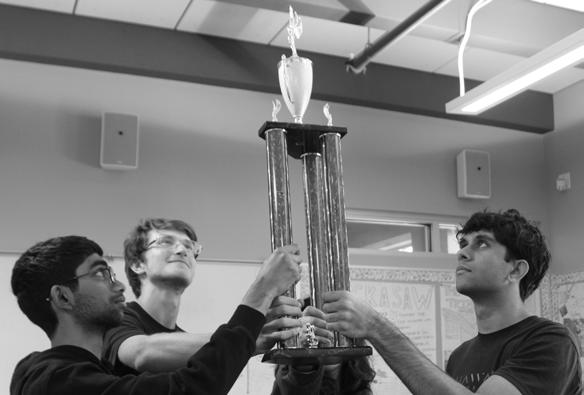





Photo by Elina Li






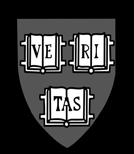



Students, staff discuss beneficial resources for college process
Guo, Olivia Levesque Ouellette and Catherine Yang
Living in the Bay Area is notoriously expensive, with the cost of living being about 18% higher than the national average, according to The San Francisco Chronicle. This increased price tag, compounded with the competitive nature of FUHSD, can leave many lower-income students feeling disadvantaged in the college application process, college and career center adviser Shay Bellamy said.
Although costly application aids, like hiring private counselors or attending pre-collegiate programs, may be out of reach for some students, HHS attempts to bridge the admissions gap for financially disadvantaged students, Bellamy said. Through the college and career center, students have access to career exploration resources, help with financial aid forms, workshops and opportunities to engage with college representatives, Bellamy said.
“The disparity is unfortunately large due to the climate we are in now,” Bellamy said. “I try to make sure that my students are well provided for and understand what they need to do. My goal will always be to get our students up and ready to be adults and go out into the world.”
Beyond the college and career center, the AVID class also helps students develop the skills they need for college through mental and academic support, AVID 12 teacher Jessica Wakefield said. The program is specifically advertised to low-in-
come, first-generation students who often face difficulties in the college application process, Wakefield added.
“For a lot of [students], they're going to be the first in their families to go to college,” Wakefield said. “Anytime you do something new, it's unknown and scary, and if you don't have somebody in your family who's been through that, it naturally feels uncomfortable. I think there's probably a certain level of imposter syndrome, too.”
As an AVID member, senior Alaina Harlow said the program has been a significant support in guiding her to attend college. Additional HHS-offered opportunities, such as study lands to prepare for finals and math lab for math tutoring, can also offer valuable academic help to students, Harlow added.
“[AVID gave] me the platform to research more extensively than I would have,” Harlow said. “It helped me find a major I wanted to do, what career I wanted to do, and what colleges I’d want to go to."
Although students may be accepted into college, the additional financial costs involved, such as tuition, living expenses, books and transportation, can prevent students from pursuing higher education, Wakefield said.
Photo by Olivia Levesque Ouellette
Thus, for those who come from lower-income backgrounds, introducing students to a variety of different scholarships allows for opportunities that allow them to continue their education, Bellamy said.
“I try to make sure that students are set up for success when they leave HHS,” Bellamy said. “My ultimate goal is to make sure that they're not struggling while they're in college. Showing them scholarships, where to apply for scholarships and making sure that they complete FAFSA to set them up for success.”
Showing support for students during the college application process and throughout their high school career, inside and outside of school, is crucial for ensuring success in their future endeavors, Wakefield said.
“I'm like their school mom, so whether it's academic help in their classes or social help with their friends, I try to provide guidance and offer resources and ideas to troubleshoot when they come up with problems,” Wakefield said. “As an AVID teacher, the support isn't just school-related. It's support for the whole person and academically, socially, emotionally, mentally, just for them to be their best selves.”


Personnel from Santa Clara University, Sonoma State University and UC Davis answer questions about the impact income has on the college application process.




Senior chanical engineering father, who lege.
“What AVID, but lege was me to do lead to a better workforce tion, you do
Q: What advice would you give to a student who might be worried about navigating the college application process with out outside counselor support?
A: The best resources are going to be in your own high school, [including] counselors that are ready and able at your disposal. As long as you feel confident your application shows who you are as a holistic student on top of just your academics, [through] what you’re doing outside of the classroom, our admission counselors will be able to see that.
-Student ambassador Meg Rawson from the Office of Undergraduate Admissions at Santa Clara University


Applying to college is a challenge for most seniors, but can be especially difficult to tackle for low-income students, for whom expensive opportunities may be out of reach. Students, staff and college representatives discuss resources and support systems that attempt to address income disparities in the college application process.
other local scholarships provide seniors with opportunities for financial support.

The AVID Scholarship honors former HHS student Cecilia Morales who embodied the AVID spirit. It awards $500 to $1000 to a nominated senior AVID student who has shown strong work ethic, completed their A-G requirements and displayed a commitment to their classes and peers.

Honmyo Nguyen Family Trust provides scholarships to students who demonstrate academic excellence and plan to attend a four-year California public university full-time. It offers up to $2000 per student.

The Ferentinos Scholarship, created in 2016 to honor former HHS teacher Nick Ferentinos, awards $5,000 to a senior planning to attend a four-year college. Applicants should demonstrate experience in journalism or American Studies, and mentorship.

The Krishnan-Shah Family Scholarship supports low-income, first generation students seeking a higher education. It offers up to $10,000 per year, renewable all four years, for a total of $40,000.
Upcoming first-generation college students, seniors Adolfo Sagrero and Melanie Ochoa share their reasons for attending college after high school.
Adolfo Sagrero said he wants to pursue meengineering to become a mechanic like his who never had the opportunity to attend col-
inspired me to take the four-year [plan] was the person who inspired me to go to colmy mom,” Sagrero said. “She kept telling it, and it got to me. She believes it would better life [rather than] going straight to the workforce because if you do not have enough educado not make enough money.”

Although senior Melanie Ochoa said her father was accepted into college, he was unable to attend due to financial limitations. Ochoa said she aims to carry on his dream by pursuing a college degree in kinesiology or biology.
“I wanted to go beyond what my parents did, too,” Ochoa said. “In the future, I want to make a lot of money so I can give [my parents] a better life, buy them a house and support them while supporting myself. That’s my main motivation: being able to support my parents and make them happy.”

Q: How does needing financial aid impact a student’s chances of admission?
A: What [applicants] provide on the application to get them merit-based financial aid has nothing to do with whether students are offered admission. As far as whether they’re selected or not, financial information is not taken into account for them.”
-Admissions officer Steven Kuhn at California Polytechnic University at San Luis Obispo
Q: How does the admissions team account for income disparities among applicants, for example, through the types of extracurriculars students might be able to participate in or financially afford?
A: We have multiple factors that go into the admissions process. For example, if a student is from a high school that did not offer too many resources, we compare the advantages or opportunities the student had at their high school and which opportunities were taken advantage of. We’re not going to punish a student from a low-income household or low-income school district just because another applicant took a billion APs.
-Student public adviser Edgardo Maldonado from the undergraduate department at UC Davis.
Fans, coloring pages handed out at SV Pride Parade
Ivy Guo
Under the blazing sun and the bright, rainbow decorations, the student-run nonprofit Color 4 Charity volunteered at the Silicon Valley Pride Parade on Aug. 31, handing out coloring pages and heart-shaped fans, executive director, senior Arcus Foo said.
Advocating for various causes, including LGBTQ+ awareness, Color 4 Charity volunteers give back to their local community through accessible means, such as by helping at events or making coloring pages for the organization, Foo said. It is also a way to thank the community, Foo said.
“[Color 4 Charity] came to SV Pride and didn't sell anything because it’s our way of giving back to the community that helped get us on our feet,” Foo said.
At the parade, Color 4 Charity’s customizable fans helped children beat the heat and learn about an important element of pride, Foo said.
“It's a big part of [LGBTQ+] culture to have fans. We use them during concerts, performances or just to cheer. Have you seen me flip that giant fan? That's our way of clapping.”
While manning their booth, volunteers were entertained by the array of different programs offered in the Family Garden, the family-friendly section, community volunteer lead, senior Nathaniel Cohen said.
“There was a fun little drag performance where the perform-
ers did ‘Golden’ from ‘KPop Demon Hunters,’” Cohen said.
Over the course of volunteering for SV Pride, social media manager, senior Noemi Liu said she valued the opportunity to connect with the parade’s young participants.
“There was a kid that I really connected with last year,” Liu said. “She came back and remembered us and I remembered her, and it was really nice to see how we affect people and have an impact on them.”

Senior Memories page helps commemorate senior year
To capture the class of 2026’s final moments at HHS, senior Michelle Zamudio said she created a new Senior Memories page, @seniormems_2026, an Instagram account dedicated to

publishing photos of seniors, in collaboration with ASB rally commissioner, senior Trey Javier.
As an account manager, Zamudio said she chooses to highlight her class's most memorable moments, such as the first day of school, sporting events and rallies.
“To me, the page is important because I get to look back on it when I’m in college and have all those photos of my whole class being together,” Zamudio said.
For a chance to be featured on the accounts, students can send their photos into the account through the direct messages function on Instagram, Zamudio said.
Encouraging her peers to be featured on the page, senior Julia Bouron said showcasing the class's time spent together on a communal medium creates a strong connection between seniors.
While it can be challenging to motivate a wide range of students to send in photos, Zamudio said she empasizes diversity when selecting which photos
to feature to represent students of different backgrounds on the account.
ASB adviser Hector Almendarez said he is glad to see the senior memories page carried on from the class of 2025, since it helps to foster a sense of community.
“It's crazy that it doesn’t feel so long ago that the seniors were freshmen. Time has flown by,” Almendarez said. “[The page] is a great way to remind seniors to be appreciative of how things go and remind themselves of the little things that they accomplish this year.”
After graduation, Zamudio said she hopes the account will remain meaningful for next year’s seniors, becoming a treasured tradition for the class of 2027 to carry on.
“There’s a lot of things that go into people’s lives, and the page can help the class of 2026 remember everything good about this year,” Zamudio said. “I hope that the class of 2027 will do something similar. It would be nice to see that they got inspired by us.”
Aviv Matas and Kanmani Raguraman
While some people get squeamish at the mention of creepy-crawlies, bugs can represent a world of excitement to others, senior Maria Haro said.
Ever since coming across a PBS nature series as a kid, Haro said she has developed a deep interest in entomology, the study of insects.
“I find beauty in their perceived grossness,” Haro said. “The Madagascar hissing cockroach is one of my favorite [cockroaches] of all time. It’s so handheld and cute, and I find that adorable.”
Similarly, junior Maggie Leon said she also has a passion for bugs.
Over the past year, Leon said she has started picking up dead bugs she finds on the ground, usually butterflies, wasps and beetles.
“If you go into my room, there’s a 50/50 chance that on anything that you pick up, there’s gonna be a bug in it,” Leon said. “I wasn’t comfortable picking up [insects] before, but now I’m okay with picking up spiders, bees and beetles. Maybe in 20 years, I’ll die because I picked up a poisonous bug, but I won’t know until then.”
After beginning this hobby, Leon said she has amassed a vast collection of bugs, which she keeps in various places in her room, though her parents do not always approve.
“The first thing that I taxi-
dermied or pinned [was a butterfly],” Leon said. “I found it in my backyard. It was caught in a spider web, but it had its wings open. It was really glorious, and it was staring up at me. I was like, ‘Wow, I have to keep it.’”
Working specifically with bees, biology teacher Natalie Della Santina said she collects bees and makes DIY bee sticks to use for class pollination activities.
“For the biology students growing their plants, once we have flowers, the flowers need to be pollinated,” Della Santina said. “The best way to move pollen from one flower to the next is using a bee [and] their fuzzy fur.”
Haro’s bug collection has lead her on a different path to pursue an entomology degree. She said she is intrigued by the multifaceted purposes of insects in the environment.
“We treat them with this pest mentality, [and] there’s still that cruelty that we need to amend,” Haro said. “What really drew me to bugs was the diversity they have in terms of what they do. Bugs are what [allow us] to exist in this world.”
To convince others to appreciate bugs the same way she does, Leon said she uses her camera to take high-quality photos of bugs and even posts them on her Instagram account.
“I think [my passion for bugs] makes me a more observant and considerate person,” Leon said. “I’m able to capture the little details you cannot see with your eyes. You think it’s ugly but you see it up close and it is actually really beautiful.”

Here is a breakdown of the hardest APs offered on campus and advice that past students would give to help their peers succeed in these more rigorous classes.
1. AP physics 1

36% of student responded this was the hardest AP class.
“Unit one of kinematics is the easiest unit ever, so you can get away with not doing the homework properly or skipping steps, but don’t do that because if you do, you’re cooked for [tests from unit two through six]. If you lock in on unit one and you learn the methods properly, those [skills] carry over so much more easily. When you actually start learning stuff, it’s less difficult.”
Aaron Huang (11)

“I think the biggest thing is to ask for help whenever you need it. My teacher, Mr. Russo, was super helpful whenever I needed any kind of assistance or when I needed him to help me understand how to write [or structure] an essay. My main advice for juniors is to not be scared of asking questions and just ask for help whenever they need it.”
Sarah Meier (12)
9% of student responded this was the hardest AP class.
“If you’re taking AP CS, you study for the tests a lot … I g I’d do practice problems from really helped me, at least for
and

Senior discusses promoting cardiac awareness, resilience
In his freshman year, senior Ryan Chian collapsed during basketball practice, and for 10 minutes, his heart stopped. Two lifeguards at a pool near the courts rushed to perform CPR until paramedics arrived to whisk him into the emergency room, Ryan Chian said.
Ryan Chian now uses social media to promote cardiac awareness and CPR training with the Kyle J. Taylor Foundation which fights to prevent sudden cardiac arrests in youth, while also working at events like heart screenings, Ryan Chian said.
“I help organize and am a part of running these [heart screening] events, and it means a lot to me because early detection of these heart conditions can prevent a lot of cardiac arrests,” Ryan Chian said.
Despite his current success, Ryan Chian said the three weeks he spent recovering in the ER were not easy. He was medically induced into a coma and, once stabilized, needed a defibrillator
implanted into his body, Ryan Chian said.
“The most difficult part of it is feeling isolated because you do not get too many visitors,” Ryan Chian said. “[However] my friends came in and brought me food and hung out, while my family was pretty much always there.”
Despite the challenges of his long recovery period, Ryan Chian’s father, Martin Chian, said Ryan Chian persevered through the hardship with reslilence.
“I don't know anyone stronger, as for most, 90% of the people who even suffered cardiac arrest outside of the hospital end up dying,” Martin Chian said. “Being able to overcome challenges, especially something as hard as what Ryan went through, gives him confidence that he can overcome many different things.”
Additionally, Martin Chian said Ryan Chian displayed his resilience by adapting back to his normal life. Though he could not play basketball again, he found a passion for golf and returned to excelling academically in his classes, Martin Chian said.
“[Ryan] getting cut from the golf team the first year, and then showing enough resilience to come back and make it the following year displays a lot of
resilience,” Martin Chian said. “I’m extremely proud of him for everything he went through.”
As a figure teenagers can relate to, Ryan Chian plays a valuable role in helping promote community awareness about cardiac arrest, executive and co-founder of the Kyle J. Taylor Foundation, Jennifer Sarmento said.
“Once somebody meets a person behind those statistics, it becomes real that this can happen, especially to someone like Ryan Chian, who was a basketball player that had no known heart issues,” Sarmento said. “Last year, Ryan Chian and his family attended our annual fundraiser, and I asked Ryan Chian if he would share his story with over 100 people and it impacted many."
Looking back, Ryan Chian said his experiences have transformed him into a more persevering and appreciative individual.
“It taught me to be more resilient and mentally strong,” Ryan Chian said. “Now, when I have challenges in my life or problems, I look back on this and I see I have overcome the worst. It taught me to appreciate waking up every day because that day [of the cardiac arrest], I didn't really expect it to be any different.”
Officers, attendees reflect on annual Indopak Garba
Bright lights and vibrant traditional clothing fill the large gym as Indopak hosted its third annual Garba on Sept. 27. Marking the last day of a Hindu religious period known as Navratri, Garba is a dance that celebrates communal unity and devotion, technology officer, junior Vineet Saraf said.
In preparation for the event, officers worked diligently to organize dance choreography, songs and food, culminating in a rewarding experience for attendees, co-president, senior Anisha Lakhotia said.
“It’s the first time all the officers came together, and we get to know each other during the event itself, it’s super energetic and fun,” Lakhotia said. “This is like bonding time because it’s a lot of work.”
The celebration helps preserve Indian traditions, especially with fewer people practicing Hinduism, Saraf said.
“A lot of people move from India, and they lose that culture when they move,” Saraf said. “They don’t have family surrounding them that supports Hindu culture, especially since Hinduism is a dying culture. By having that here, we can uphold our roots [and] show who we are.”
The event allows members of the Indian community to express their cultural identity, junior Anjay Parthasarathy said.
“I really want to connect with my youth, especially because we have [religious devotion] going around at this time,” Parthasarathy said. “The fact that HHS hosts this type of event is really cool because I can actual-
ly see my culture around me and know that it’s not something that I have to hide.”
Specifically, an attending parent, Sumit Shah said Garba allows parents to introduce Indian dance to their children while living in the U.S., preserving traditions for the next generation.
“I came to introduce my kids to an auspicious Indian event I used to partake in growing up,” Shah said. “I wanted my kids to be able to experience that here in the Bay Area.”
Overall, Shah said Garba fosters a strong sense of unity among attendees.
“Garba brings people together [and] reminds us that togetherness is what matters most,” Shah said. “It’s a chance to show off your creative side, your dancing skills [and] to reflect on Indian culture and something that makes us very proud. It reflects on a shared heritage that we all have and makes us feel that we are a strong community.”
Outside of celebrating culture, Parthasarathy said Garba provided an opportunity to relax and socialize.
“My favorite part about Garba is that I can really let loose and
dance with my friends from the community,” Parthasarathy said. “That’s not really something I can do often, and if I start dancing randomly in school, I feel like people will judge me. Over here, there are people of all ages dancing from babies to adults, males and females, so just being able to be yourself is really freeing [and] fun.’”
In the future, Parthasarathy said he hopes Indopak will allow attendees to choose the dance music so the atmosphere can cater to varying preferences.
Shah also said he hopes that next year’s Garba will offer dandiya sticks used in Indian folk dances, at the event.
Though the main goal of Garba was to celebrate an Indian tradition, people from many ethnic backgrounds and cultures attended the event, Saraf said.
“A highlight of planning this event is talking to people and convincing them that Garba is not just limited to Indian or Gujarati people, it’s for people from everywhere,” Saraf said. “It warms my heart to see that we have a lot of people here that want to try something out and experience a different culture.”

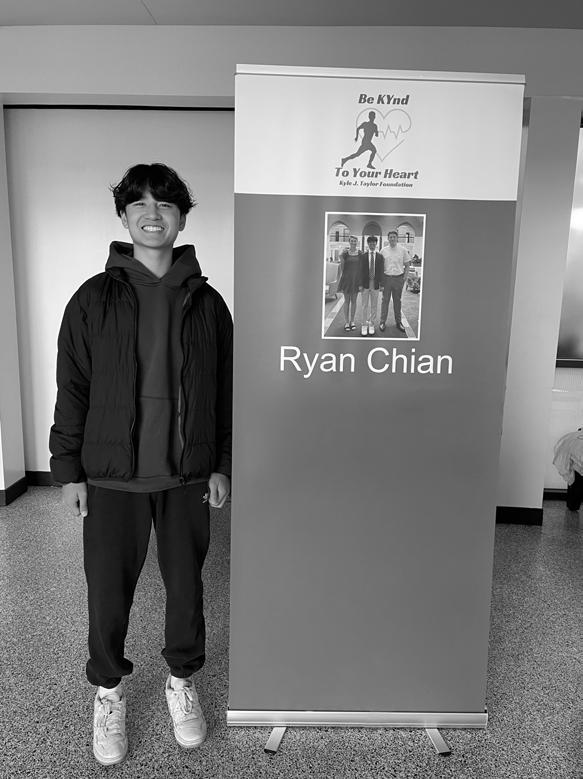
Yichen Yao
In the upcoming fall play, “Radium Girls,” students are stepping into the shoes of real, young women who worked with deadly radium in the 1920s, drama club adviser Alana Caires said.
The play depicts the lives of women who worked in dial factories and ingested radium due to the instructions of their supervisors, resulting in health consequences and lengthy legal battles, president, senior Eden Rademacher said.
Auditions for the play were open to all students, regardless of previous experience, co-vice president, senior Archit Gunhal said.
“What I look for is, ‘Do they have adaptability? Do they have [the] flexibility to fit whatever character I’m looking for? Do they have energy? Do they have that stage presence that’s so valuable?’” Gunhal said.
While casting, Caires said she looked for flexible actors who could represent the dy-
namism of the play’s characters with a wide range of characteristics and shifting personality traits.
“I wanted to see a range of being able to play a young girl who’s still figuring out her place, and then, on the flip side, someone who knows who they are and what they’re worth as well,” Caires said.
During rehearsals, Caires said the most challenging part of preparing for the performances was interpreting the characters.
“With any kind of drama, and especially [ones] based on real people, there [are] limits to what we can necessarily do with characters,” Caires said. “Obviously, every actor is going to have their interpretation, and every director is going to guide them differently.”
Through the play, Caires said she hopes everyone can gain a bigger sense of confidence and empathy.
“Getting up in front of everybody on a stage and putting yourself out there takes a lot of guts,” Caires said. “Empathy is another great skill, because you’re stepping into someone else’s shoes and really have to imagine what it would feel like if you [were] in this position.”

Suburban narrative surrounding artist’s engagement manipulates fans
Culminating a well-documented, tumultuous journey in search of true love, pop sensation Taylor Swift is finally getting married to football player Travis Kelce, according to NYT.
Despite her largely publicized announcement on Instagram to her song “So High School,” young fans of Swift must not be misguided into believing the musician’s engagement makes her a relatable figure for the average teenager. Language surrounding Swift’s engagement pushes a false, carefully calculated middle-class narrative that does not reflect the realities associated with her extreme wealth and fame.
The joint Instagram post
announcing the couple’s engagement was captioned, “Your English teacher and your gym teacher are getting married,” according to NYT. However, this charming portrayal of a suburban relationship between two educators could not be further from the truth.
Swift is the richest female musician in the world, with a shocking estimated net worth of $1.6 billion, according to Forbes. Kelce trails behind with $70 million, according to Forbes.
Despite the persona she attempts to sell herself as, Swift’s lavish lifestyle is a far cry from the lives of most educators.
The average salary for a teacher in the United States is $72,030, according to the National Education Association. Yet, the average salary needed to afford a typical home in the US is $116,986, according to Bankrate.
On a single income stream, most teachers are left unable to comfortably thrive in their communities, presenting a stark
contrast to Swift’s exuberant and unrealistic wealth.
Moreover, with Swift’s highest level of official education being a high school diploma, she lacks the basic qualifications needed to work as a public school teacher despite branding herself as an icon of literary prowess, according to Women’s Health.
Swift capitalizing on the societal sympathy our nation offers educators, yet being so financially remote from those she is trying to emulate, makes her a wolf in sheep’s clothing.
By hiding under a carefully polished shell of middle-class relatability, Swift avoids confronting the extreme privileges her wealth has offered her. Through this financially-driven veneer, Swift remains accessible to her fans and continues to generate huge profits.
Nonetheless, I do not fault Swift for using her talents to become an international pop sensation, a career path that pays her well. However, I disagree
Subcultures of looksmaxxers, performative males objectify individuals
Drinking matcha. Carrying around ugly multicolored monsters. Listening to Clairo’s music through wired headphones. All of these traits are key characteristics of the performative male, a type of man who dedicates his entire personality to attracting women. A seemingly opposite version of this type of man are looksmaxxers, men with chiseled jawlines who
advertise online courses in an effort to attract female attention.
Despite having different approaches to appeasing women, both subcultures commodify women.
Looksmaxxers idolize Patrick Bateman of “American Psycho” as a role model, according to BBC. Despite being a womanizer who kills women for pleasure, Bateman is portrayed as an attractive man who takes care of himself and attracts women because of that.
Young males’ idolization of him leads to women being seen as expendable. Looksmaxxers end up focused more on attracting women than on forming meaningful relationships.
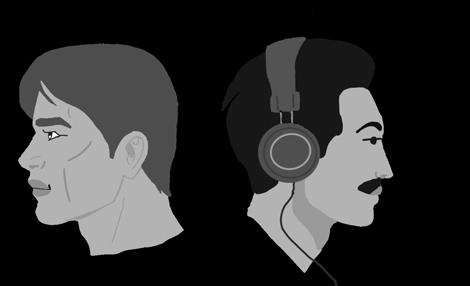
Both performative males and looksmaxxers dedicate their entire personalities to attracting women.
On the flip side, performative men expect to be seen as feminists while caring more about attracting women than in their rights. During the Seattle performative male contest in August, performative men were asked about basic feminist topics, and most were unable to answer correctly, according to NYT.
Claiming to be an ally while not doing the work
to be one turns activism into a joke instead of something that incentivizes change. Treating feminism as a tool to attract women draws attention away from the real issues and tarnishes real efforts.
While performative men destabilize women’s rights movements by being false allies, many looksmaxxers end up negatively affecting the people they think they’re helping.
Looksmaxxing encourages young men to ignore their mental and physical health and prioritize sculpted abs and angular jawlines. This creates an echo chamber of toxic masculinity that feeds an obsession with looks and breeds insecurity for men.
Despite the dangers that these mindsets pose, both groups are treated as jokes. Performative males especially are made fun of, with various social media posts training men on how to act performatively. These kinds of behaviors are normalized and perceived as trends, preventing them from being taken as serious threats.
Both performative males and looksmaxxers share a common goal of attracting women, having dire consequences for how society as a whole views themselves.
with the everywoman narrative that Swift’s engagement manipulates her millions of fans into believing, especially as it turns a blind eye to the harsh realities her immense wealth has allowed her to escape.
To truly benefit the teachers whose positive image Swift is attempting to steal, she must use her wealth to support teachers, not steal their spotlight. Generous donations to expand access to classroom supplies and resources as well as lobbying for higher staff pay and addressing teacher shortages are just a few ways Swift can benefit our nation’s educators.
Ultimately, Swift’s billionaire status makes her inherently detached from the lives of the majority of her devoted Swifties, no matter how much she attempts to mask it. Fans must think twice before falling for her profit-motivated narrative.
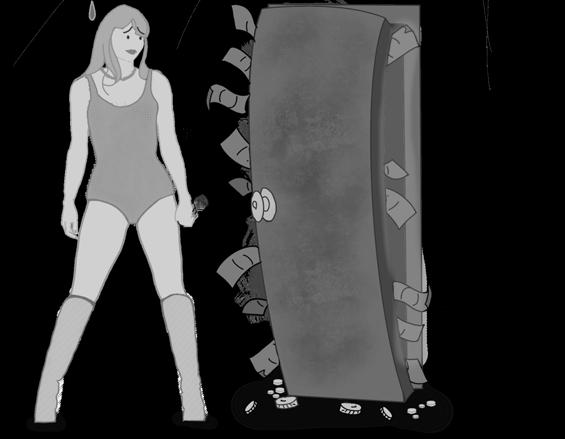

“‘You’re Gonna Miss It All’ by Modern Baseball made me cry a couple times listening to the album. I listen to it whenever I'm sad and it's also very uplifting whenever I'm happy.”
“‘To Be Hero X’ is a donghua, which is from China, and I love it because the animation is so crisp and cool. I like how they introduced the 10 different characters and each of their story arcs was well written.”


“I enjoyed the book ‘Disney Animation: The Illusion of Life’ because it inspired me to be more creative in terms of digital media, animation, photography and even videography. It’s helped me develop my creativity in those areas.”
Hank Green’s new productivity app Focus Friend works surprisingly well
As someone who gets easily distracted, I was delighted to find that prominent YouTuber and educator Hank Green launched a new productivity app, Focus Friend. Upon seeing the teaser, I was immediately roped in by its cute visuals and accessibility as a free app, so I downloaded it. While the app primarily functions as a study timer that limits screen time, its premise is gamified. The app involves a bean
character who wants to knit, but it can only do so if the user sets a timer and does not use their phone.
Very quickly, Focus Friend presents itself as a customizable and feel-good app. Touches of humor and personality create an emotional incentive to stay on task because it just feels wrong to let down my anthropomorphic bean friend by interrupting its knitting time. By the end of the timer, the bean knits a certain number of socks, which can be traded for decorations in the bean’s house. Usually, I would not be so compelled to use apps like this, but the house decorations are so aesthetically designed, with a variety of
colors to choose from, that I want to collect them all.
So far, the app has helped me set time aside to complete homework assignments or small household tasks like cleaning my room.
However, the current number of rooms and decorations is lim ited. In a new update, a liv ing room was added to the bean’s default room, but both rooms can be filled up easily with diligent use of the app. When I run out of things to buy or unlock, my use of Focus Friend will likely dwindle, and locking in will be exponentially harder.
to-do list feature would help with tracking tasks. There are other

Additionally, since the app only functions as a timer, a
Focus Friend incentivizes me to stay on task by framing work as a way to help my bean friend knit socks.
apps that do this, but it would be convenient to have multiple productivity tools integrated smoothly into one app.
Ultimately, Focus Friend delivers on what it promises: a cozy timer app. I have used many other productivity tools in the past, but Focus Friend keeps me coming back for its endearing premise. I want to see my bean succeed, and in turn, that helps me finish my work. In fact, I used Focus Friend while writing this article, and I would like to congratulate my bean on knitting 42 socks.
App: Focus Friend.
Grade: A.
Show struggles to match book’s essence
Danielle Feldsher
When asked about my favorite books, I am tempted to reply with sophisticated novels that could be found in a literature class. However, my true answer, “The Summer I Turned Pretty,” has remained my most beloved since eighth grade, tucked away in a pocket of nostalgia and warmth.
Set in summer at the fictional and charming Cousins beach, author Jenny Han successfully crafts a timeless setting for the characters to blossom through her clean writing. Yet, Han fails to maintain the same enchantment in the third and final season of her TV show adaptation.
Released on July 16, the third season begins with the main character Belly Conklin, played by Lola Tung, and her boyfriend Jeremiah Fisher, played by Gavin Casalegno, as we navigate their long-term relationship during college. Almost immediately, the audience is reminded of Belly’s past with Conrad Fisher, played by Christopher Briney, as complex relationships between characters begin to escalate with Conrad’s sudden return to Cousins beach.
Entering the finale of the TV drama, I felt protective over the story I had found comfort in since middle school. I was hopeful that the world Han built in the novel would transfer to the screen flawlessly. However, poor choices in actors and songs created a show that fails to emulate the timeless quality of the novels.
While viewers are supposed to connect to the realism and relatability, the actors on “The Summer I Turned Pretty” made that impossible.
Specifically, Casalegno made poor acting choices, with awkward character interactions and lack of emotional range making it difficult to resonate or sympathize with Jeremiah.
The lack of strong actors was made even more problematic by Han’s choice to expand on the storylines of secondary characters. Although I came into the finale excited to watch Belly and Conrad’s iconic love story conclude, I was instead met with overdeveloped yet shallow arcs for Belly’s family members that felt irrelevant to the main story.
Along with subpar acting that made it difficult to immerse myself in the show, Han’s music choices for the soundtrack were poorly selected. Han’s overuse of popular Taylor Swift songs and the outdated wardrobe choices made the show feel like a stereotypical capsule of 2025 instead of a show that could become an instant classic.
Despite these flaws, Tung’s performance as Belly is a highlight of the show. Not only has Tung greatly improve in portraying deeper emotions from previous seasons, she also captures the complexity and rawness of Belly. However, Tung’s appearance is not enough to distract me from the show’s flaws.
While I was hoping the finale would tie up Belly and Conrad’s story, I was left with a mediocre show that focused more on performative pop songs than crafting a classic story. I was better off rereading my favorite chapters from the book than waiting until Wednesday every week for the release of an average episode.
Show: “The Summer I Turned Pretty.”
Grade: C+. Rated TV-14 Watch on Amazon Prime.
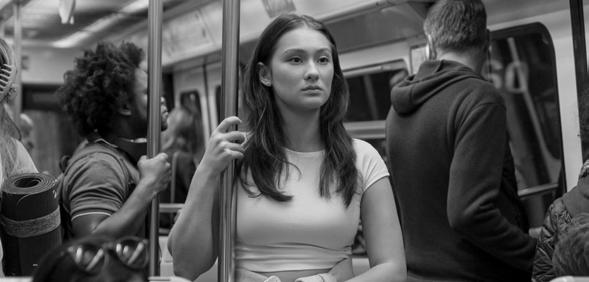


Students give thoughts on summer brainrot terms Barbershop Haircut
“It’s just a loud guy. I like [memes] when it’s just like a random video, instead of people trying to be funny on purpose.”
Kat Heller (11)
“It doesn’t have any significant meaning, but for people who know, it’s hilarious. It’s an in group, out group type of meme.”

a
We must embrace ambiguity
Jason Lai
An ancient story I enjoy is Homer’s almost 3,000-year-old poem “The Iliad,” the narrative about the legendary Greek hero Achilles. While the tale’s beautiful prose and emotional tragedy is etched into my memory, its main appeal to me is one factor: ambiguity.
I am left wondering if Achilles and his best friend Patroclus are lovers, and if the famous “Achilles’ heel” was even considered when Homer wrote the story.
Although I will never find the answers to my questions, I love this about art in general. Art lets me look at a masterpiece and simply say, “I don’t know.”
However, the magic of ambiguity within art seems to be fading, as society has developed a need to define everything.
Our favorite shows are summarized in a single sentence by a Wikipedia summary, movies are turned into a one-minute YouTube short and every single murder mystery blockbuster has an unoriginal reveal at the end. This has become a serious issue within art, as it has ruined the ability to really sit with a piece and reflect on it.
An example of this is the 2022 film “Glass Onion: A Knives Out Mystery.” By the end of the story, all the secrets are disclosed, and the “eat the rich” message is unsophisticated and hypocriti-
cal. I forgot about the film immediately after watching it, as there was simply nothing to reflect on.
This push into making art have one single interpretation and leaving viewers without unanswered questions to ponder over is destroying works’ meanings and creativity.
Stories that feed us the answer do not stir up reflection or passion within viewers. Instead, consumers lose the ability to critically analyze and tackle art with an open mind, causing them to never grow intellectually from viewing an art piece.
Instead, stories that use creativity to create ambiguity and uncertainty are what make art great.
An example of this is the 1985 film “Clue,” which features many different endings, all of which are plausible. This leaves viewers intrigued by the film and encouraged to think deeply on what could have been the “true” end ing.
Additional ly, stories with these elements stand the test of time, sticking with me longer than straight forward ones.
One of my favorite films, David Lynch’s 2001 film “Mulholland Drive” features ambiguity through the
‘KPop Demon Hunters’ is not so ‘Golden’
Film’s popularity overshadows reality
Elena Shim
Being Korean has always been a part of myself that I dearly embrace, from the language I speak with family to the pride I feel when I see my culture represented across the world.
This summer, a prime example of that representation was the global wave of the animated movie musical “KPop Demon Hunters.”
Since its release on June 20 and its successful theatrical sing-along release on Aug. 23, it now takes the title of Netflix’s most-watched animated film, with its soundtrack lining up at the top of Billboard, according to BBC.
The film revolves around Rumi, Mira and Zoey, who are three girls in a K-pop girl group, HUNTR/X,
that hunts demons. As the plot progresses, they fight against a rival demon boy group, lead by Jinu, who targets their fans for souls to feed off of.
Despite the film’s incredible success, as a Korean, I am mostly disappointed in its shallow reflection of the Korean culture.
While K-pop is at the core of its plot, “KPop Demon Hunters” misrepresents the true culture of its namesake music industry. With songs that have only one to two lines of Korean, the entire soundtrack is barely K-pop. The movie targets globalization and the “trendiness” of K-pop, while neglecting its connections to the Korean language, failing to show the depth that makes the genre meaningful.
“Hunter’s Mantra,” a song introduced at the beginning of the movie, is based on Pansori, a traditional form of Korean music used for
storytelling. Instead of making it a highlight of the movie, it is used as the background music of a scene.
Although I admit I find myself humming the melodies of the other Billboard-ranking songs, I can only feel disappointment that the soundtrack album excludes this song. I see “Hunter’s Mantra” as the truest form of Korean music in the movie. I would have hoped that the film could develop a broader story by releasing the song, showing how Pansori has motivated the development of modern K-pop.
The movie also fails to consider the harsh reality of the K-pop industry. The freedom that Jinu and Rumi have to meet each other in private without staff supervision, is far from typical. This sugarcoated portrayal glosses over the real struggles K-pop idols face.
Although the film forgets to embrace the cultural essence of Korean music, it does so in its an-
Jet2Holiday

“There was a sound of this British lady that went ‘you can save 50
a
saying
Because
surreal narrative that blends reality and dreams, while also including many fragmented open-ended scenes.
I marvel at the fact that I do not know the intention or meaning behind many great pieces of art, and can only guess. Instead of frustration, this gives me joy and encourages me to stay curious and dig deeper. It further allows me to create my own interpretations on art, instead of being forced into having the same homogenized views as everybody else.
As consumers, we can learn to appreciate and enjoy art more if we embrace its ambiguity. Artists must push to have the creative freedom to produce more modern stories that still have this element. Although it sounds counterintuitive, not knowing actually makes us smarter.

imation. The blue tiger Derpy, three-eyed magpie Sussie and demons are designed in the lens of Minhwa, Korean folk art. Those characters are the most exciting part of the movie, as it showcases a part of Korean culture that was yet unfamiliar to the rest of the world.
The film also outdoes itself in depicting the lifestyles of Koreans. From the tranquility of Bukchon Hanok Village to the pouched packaging of herbal medicine, the movie encompasses the details of living in Korea.
While many fans watch “KPop Demon Hunters” over and over, the film misses numerous elements necessary for developing a truthful depiction
of Korean culture and music. The movie is false in its account of Korea, profiting off of the popularity of K-pop. Therefore, it does not deserve its huge global attention.
Movie: “KPop Demon Hunters.”
Grade: C-. Rated PG. Watch on Netflix.

Leo Silberstein continues middle school athletic success
Adapting from middle school to high school level sports teams can often be rough for young student-athletes, cross country coach Kenrick Sealy said. However, cross country runner, freshman Leo Silberstein has taken on this transition in stride, Sealy said.
“I’ve been personally coaching middle school kids for a long time and, by far, Leo is one of the best kids I’ve had,” Sealy said. “He’s been the fastest by at least 15 seconds compared to the other kids.”
Silberstein, who began running in elementary school under the guidance of his father, said he had the valuable opportunity
to train with the HHS team while in middle school as part of Sealy’s Silver Bullets Track Club. During eighth grade, he broke the county record for the middle school mile and placed highly at the Nike Outdoor Nationals 2025, Silberstein said.
“I’m most proud of breaking the county record because it took a lot of preparation to do it,” Silberstein said. “I was pretty nervous the whole day, even at school. Then, when we got there, I felt a little calm and just ready to do my best. Then, afterwards, I felt very happy.”
Kicking off the fall season with aims to achieve a mile time of below 4:20, Sealy said Silberstein has a bright future ahead, especially given his placement as one of the top middle school runners in California.
“When it comes to running, Silberstein has this metronomic skill in his head, and he can lower his
time by two, three seconds every lap,” Sealy said. “That is a unique skill to have at such a young age because he started doing it in seventh grade. Last year, it bore fruit for what he could be, and he was just amazing.”
In addition to Silberstein’s outstanding season as a middle schooler, his time with the HHS team as a younger runner has helped Silberstein mature into a confident, hard-working athlete, Sealy said.
“When I first met him, I could see that he wanted to improve because he had one or two kids that beat him, and he felt that, [though] he worked really hard, he wasn’t able to beat those guys,” Sealy said. “So, he was determined to come back the next year, and beat those kids. That’s when his dad approached me and asked me for some help and, ever since, it’s been nothing but success. The kids that beat him are so far in his
Student photographers share journeys, challenges
Capturing the talents of student-athletes through photography and videography, sophomores Joshua Fraleigh and Mateo Ernst showcase the diverse skills of mustang athletics.
Joshua Fraleigh
@joshyvisuals Photographer, Videographer Camera: Canon EOS R5
As a baseball player, Fraleigh said he was accustomed to being featured in his father’s sports photography.
However, his first time picking up a camera was at a friend’s volleyball game four years ago, Fraleigh said. After his friends complimented his photos, Fraleigh said he decided to pursue the hobby and has not looked back since.
“I had access to [my father’s] equipment, and his love for taking photos transferred to me,” Fraleigh said. “That inspired me to do my best.”
As he began to cultivate his talent, Fraleigh said he would watch Youtube tutorials to hone his skills, practicing as often as he could. Soon, Fraleigh said he came to love the exhilaration of shooting games and seeing athletes’ reactions to his work.

“Athletes like it when they get photos of themselves,” Fraleigh said. “I feel like I’m helping other athletes. I love seeing them like [my photos].”
However, Fraleigh said shooting sports, especially those played indoors, has proven to be challenging. Gyms often have harsh lighting, which he has found especially difficult to counter as a budding photographer, Fraleigh added.
Fraleigh said he began to create a signature look by accentuating any green details in his shots to highlight the signature school colors, as well as emphasizing the focused appearance of players.
“It’s focusing on the fact that they play for HHS, and I think it’s a really cool effect,” Fraleigh said. “I try to emphasize the actions that are taking place, but I also like taking still shots when the athletes are ‘locked in.’ Sometimes I zoom in on their faces to show the detail, and I think it looks really good.”
Mateo Ernst
@mateophotography09 Photographer
Camera: Canon EOS R5 Mark II
Before he began posting his work on Instagram, Ernst said he had watched his father shoot landscapes for most of his youth, which inspired his own passion for photography when he was 10 years old.
In search of a hobby to occupy
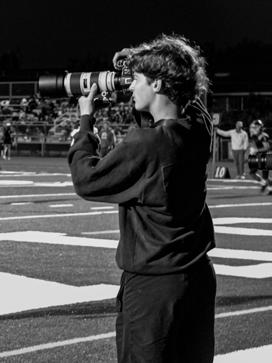
rear view mirror that it’s not even funny.”
Similarly, Silberstein’s teammate, sophomore Wyatt Sanborn said he values Silberstein’s unflagging dedication to the sport and positive presence on the team.
“Silberstein is very dedicated to what he does. He trains very hard and he doesn’t like taking days off,” Sanborn said. “He’s very resilient. He doesn’t give up mentally, and he’s ready to push until the end. He’s good at supporting his teammates and making sure everyone feels like they’re part of a team and helping everyone push to be the best they can be.”
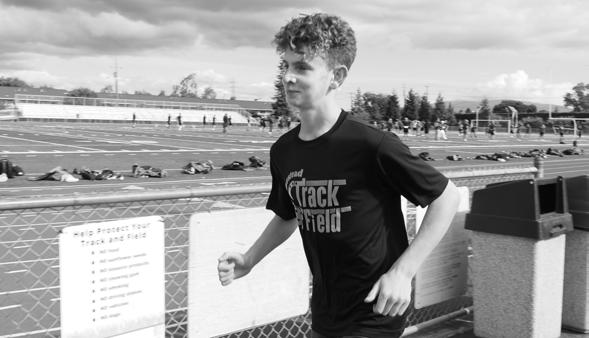
his time and provide a sense of purpose, Ernst said he turned to photography.
“I felt like a part of me was missing, and I wanted to fill that with something,” Ernst said. “That’s why I started taking photography seriously. There was a big change, and I feel much happier with myself.”
Though he initially emulated his father’s photography style, Ernst said he was drawn to the excitement of sports photography.
“I really like action sports with a lot of movement where you can create effects in a dynamic standpoint,” Ernst said. “You always have to pay attention to what’s going on in the game and read the scene.”
While shooting sports, Ernst said he also came to enjoy working with color throughout the editing process. Though his photos originally had a more saturated look, Ernst said he has since begun exploring different styles of editing to find his style.
“Over the summer, I experimented with film looks just to see what I like,” Ernst said. “Lately, I’ve been liking the orange and teal look and have stayed in that lane.”
As a photographer, Ernst said dealing with conflicting opinions about his work can be difficult to accept, especially because of the work involved.
“My biggest challenge is figuring out when someone has a problem with your photos and then finding that sweet spot of everyone liking your photos and you also enjoying them,” Ernst said.
Chosen as this year’s official ASB photographer, ASB adviser Hector Almendarez said Ernst stood out because of his considerable experience in taking photos.
“He loves photography. This is what he lives for,” Almendarez said. “Because of the time he’s willing to dedicate to to his craft, he’s done an excellent job.”
Coaches rework team to be more flexible, student-centered
Parth Dhaulakhandi, Olivia Levesque Ouellette and Luna Pitl
FUHSD alumnae Maya Sato and Kinoka Masumoto have taken charge of The Equestriettes as the new dance team coaches, following the departure of long-term adviser Sara Frausto and coach Kelly Gilfillan, junior Emily Liu said.
In past seasons, The Equestriettes only had one coach, senior Rikako Sato said. With an additional coach, practices will run smoother, Rikako Sato added.
“Having two coaches helps because there are a lot of different things they can do,” Rikako Sato said. “One coach can be looking at formations, and the other can look at technical cleaning or give us different input, so we have two pairs of eyes looking at everything.”
Additionally, with both coaches striving for a more open teaching style, they have allowed team officers to take on more responsibilities, Liu said.
“The new coaches have a different coaching style than the coaches we had in the previous years, [and] it’s definitely made an impact on how the new people learn,” Liu said. “This year, the officers and the captains of the team have taken more of a lead in teaching dances and leading practices than in past years.”
While dancing on The Equestriettes from 2017-2021, Maya Sato said the team environment was intense, making learning and practicing difficult. Maya Sato said this is an issue she and Masumoto hope to prevent.
“A lot of what we are trying to do as coaches is to be the coaches that we needed when we were in high school,” Maya Sato said. “That’s what we’ve been trying to change since we’ve been coaching: focusing a lot more on the
girls’ community base and teamwork. Building that bond is number one for us.”
With the team consisting of six dancers this year, having a strong bond is an important factor in performance success, Rikako Sato said.
“I think being really close as a team outside of dancing has helped us dance better as a team,” Rikako Sato said. “We can feed off of each other’s energy, and it helps when [coaches] give critiques.”
To start off the season on the right foot, Masumoto said she wants to create a welcoming community on the team. Treating the dancers as peers also allows for them to feel comfortable with the coaches, Masumoto added.
“We’ve implemented one-onone or two-on-one [discussions], just to talk about dance schools, personal goals or how you’re doing,” Masumoto said. “We’ve always talked about an open door policy. We’re here for anything, whether it’s school related, personal related or dance related, creating a light-hearted environment. We try to joke around with the girls, and make it an environment they want to be in.”



6-4

1-6-1 1-2


Liked by hhsvarsitygirlstennis and others
homestead_athletics_department “People think tennis players have a lot of grace, but people are really mean [and] act differently outside of the court.” - Chelsea Lau (10)
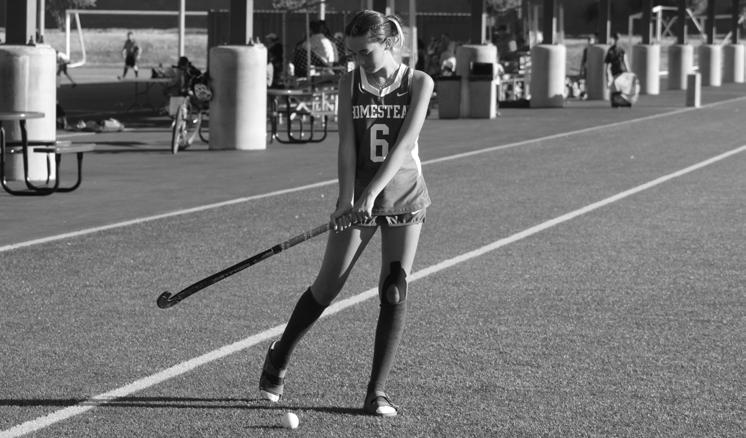
Liked by homesteadvfhock and others
homestead_athletics_department “Most people confuse it with ice hockey. We can’t use both sides of the stick. You’re only allowed to use the flat side [in field hockey].” - Olivia Leyton (9)

4-6


Liked by hhsboyswaterpolo and others
homestead_athletics_department “Everybody thinks you can easily go up and down the pool like running. It’s not the same as swim conditioning.” - Trace Lucero (11)
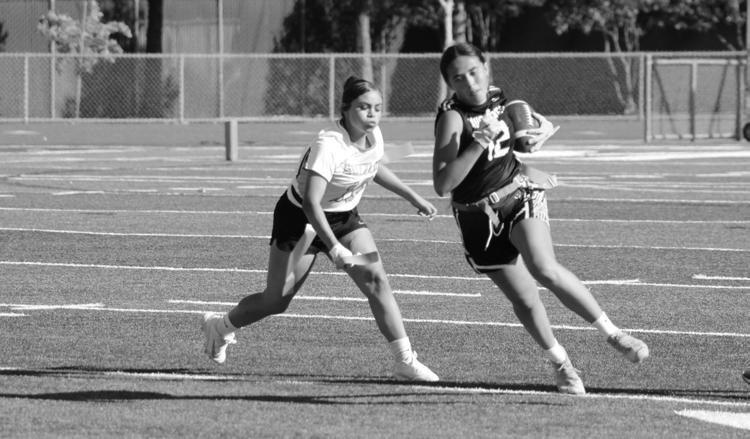
Liked by hhs_flag_football and others
homestead_athletics_department “[People] don’t understand that it’s totally non-contact. A lot of people ask if we wear helmets, and [we] don’t wear helmets.” - Kayla Sonn (9)
Senior inspires teammates to succeed
Natasha Bandil
Entering her fourth year on varsity girls volleyball, outside hitter, senior Megan Lee’s leadership creates a positive atmosphere on the court, rightside hitter, sophomore Tayla Yip said.
“Lee’s leadership is very adaptive to the situation we’re in,” Yip said. “If we’re in a tight game, she’ll give us some good tips on how to play and how to score. When we’re kind of messing around, she’ll join us and have fun.”
Reflecting on her athletic career, Lee said she has been playing volleyball for eight years after be-
ing inspired by her father to take up the sport.
In addition to her powerful leadership skills, Lee’s competitiveness has enabled her to thrive during tense situations over the years, head coach Daniel Neri said.
“Whether it be her sophomore and junior year in the state playoffs or anything of the nature, Lee always came through and has always attacked the challenge without doubt, even if there’s a high amount of pressure,” Neri said.
Beyond Lee’s ambition, Neri said her positivity, diligence and unique drive to improve inspire her teammates.
“Lee’s positive attitude really stood out to me,” Neri said. “I could have an abundance of things to say
as a coach, and she always took [that] information in and never fought back.”
Lee said her optimistic perspective developed from her eight years of experience, which helped her carefully hone her teamwork skills.
“[I learned] positive energy, because you see how much people grow off of each other during the game,” Lee said. “[Having] patience, communicating with people and seeing how people receive feedback are good skills to have in general.”
Furthermore, Lee said that, as captain, guiding younger players sets a strong example for her teammates.
“There’s freshmen, sophomores and juniors on the team. As a se-
nior, it feels good to be able to show them how HHS volleyball works out and be a role model,” Lee said.
As a result, Lee’s cheerful influence extends beyond the court, raising the confidence of all those around her, Yip said.
“Lee provides great leadership,” Yip said. “It’s because of her, that HHS volleyball is where it is. She really has made
the program better and took us to places that we want to go.”





















Flamerich said he has gained experience by performing at the Matchbox Open Mic at Red Rock Cafe, and comedy has grown to be an enjoyable medium through which he shares his voice.






“[Comedy] is a pretty good way for me to express myself," Flamerich said. "I feel like everybody has these ideas in their head that they want to tell someone. If you go to a set of comedy gigs, you just say anything that comes to mind.”
Despite having only done two performances so far, Flamerich said comedy provides him with an outlet to freely explore his thoughts.
“I feel like everybody has these ideas in their head that they want to tell someone, and they try to work it into a conversation,” Flamerich said. “If you go to a set of a comedy gig, you just say it.”

“[Performing] is terrifying for the first 20 seconds, and then you realize, ‘Oh, I’m already up here,’” Flamerich said. "They’re already wasting their time looking at me, so joke's on them if they don’t laugh."



Breaking the nerve of performing may be difficult, but Flamerich said he has grown to overcome it with experience and has grown comfortable on stage.

Relatable jokes and humorous analogies grab students' attention in the classroom. Educators explain how and why they incorporate humor into classes.
Students can be funny, but stand-up comedian, senior Daniel Flamerich uses his talent to express himself. Flamerich shares his experiences with comedy and his growth as a performer. Social Media (42.6%)





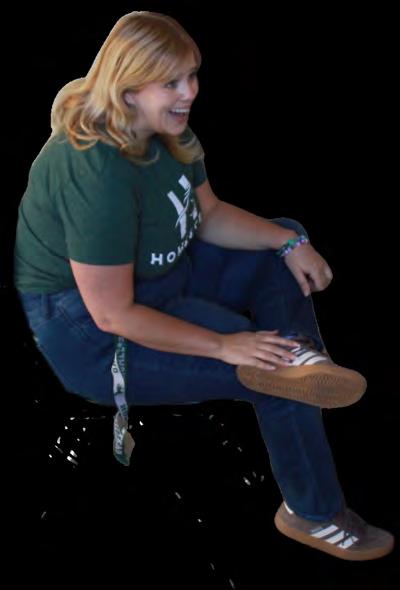
“If I crack a joke and kids laugh, then I know I have their atten tion. It’s also a way to hold their attention because sometimes we have to cover really boring topics in class. If you can make it a little more amusing, it helps students stay more engaged, helping them remember information better.”
— English teacher Megan Rupe







Haveyoubeentoa stand-upshow?


Comedy Movies (20.6%) Stand-up (18.4%)





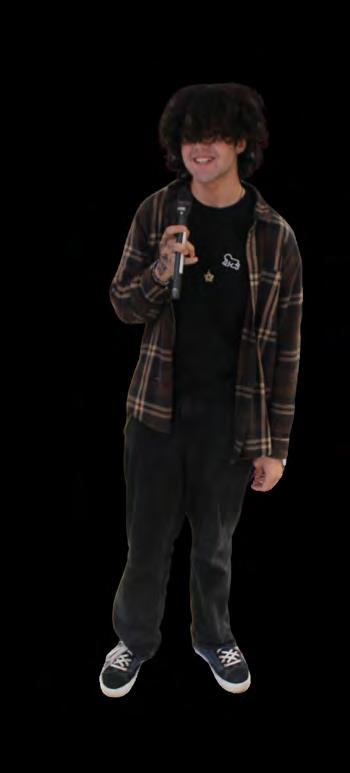
Other (5.9%)
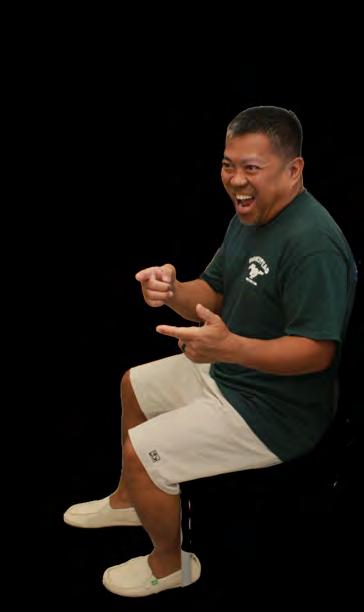





Late night shows (12.5%)
A content creator, director and actor walk into a comedy club. The waiter says, “What is this, a hook?”


Matchbox Open Mic
Oct. 11, 6 to 8:30 p.m. Los Altos Community Center @thematchbox.openmic Cupterteens Got Laughs Nov. 23, 3 to 6 p.m. Cupertino Community Hall https://cuperteensgotlaughs.org/ No (73.5%) Yes (26.5%)

Senior Jesus Hernandez Tornez, junior Nicole Jivotovski and senior George Pack discuss the use of humor in personal projects.

“In [marching band], we did a few videos, and they got over 40,000 views. [If I] see a reel and I’m like, ‘Hey, that’s funny,’ I want to recreate it as a concept for marching band or the tuba section. It gets us more followers and likes on Instagram. Tuba is a serious section, but there’s also a goofy side to the section. We want to emphasize that we’re also funny.”


— Jesus Hernandez Tornez (12)




“[Laughter] is what comedy brings to the classroom. If there's no laughter, then it's just a dead classroom. The more happy you are being in class, the more you come in with a positive attitude, smile and laugh, and that’s beneficial for every person in education, whether it's the educator themselves or the students.”
— Science teacher Chris Nafrada
“[In film club], we did a parody of the film ‘Superbad’ and called it ‘VeryBad.’ It was stressful, but I am hap py with how it turned out. Sometimes, I’ll watch it on my own in bed, and laugh hysterically the entire time. Specifically, in our film, it’s the kind of funny where something’s just so bad, it’s funny. There are a few shots where we all break out laughing because we can’t take it seriously, and I kept that in the final cut.”
— Nicole Jivotovski (11)




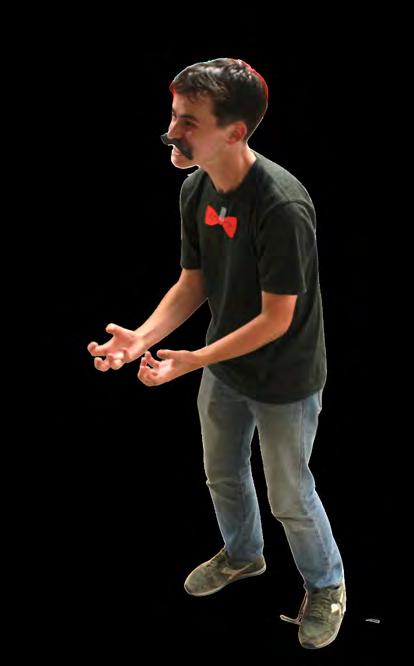



“We created [a video for AP U.S. Histo ry] in the style of a David Attenborough nature documentary, where we had a narration similar to wildlife ecosystems, but instead, were talking about labor in the Industrial Revolution. When you're cramming for a test, it's not fun, but when do something you enjoy, it helps you feel differently about the topic.”
— George Pack (12)








